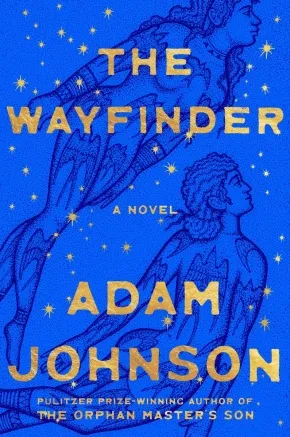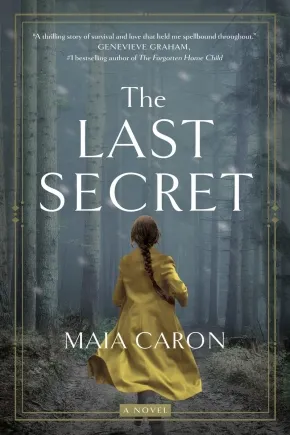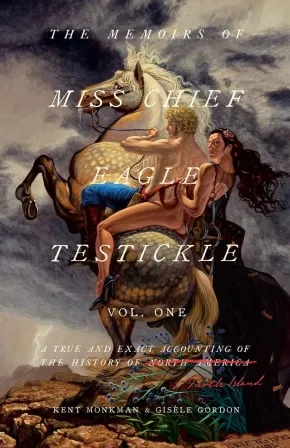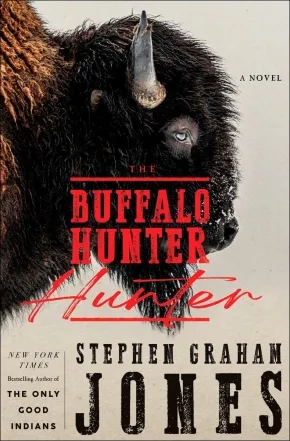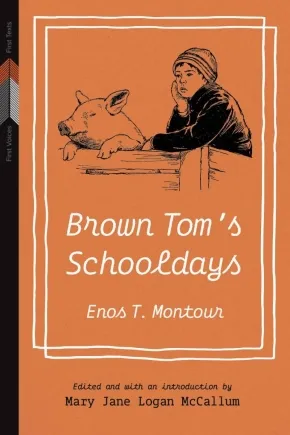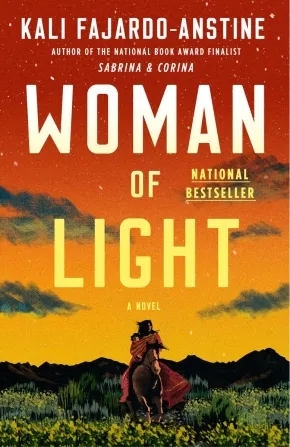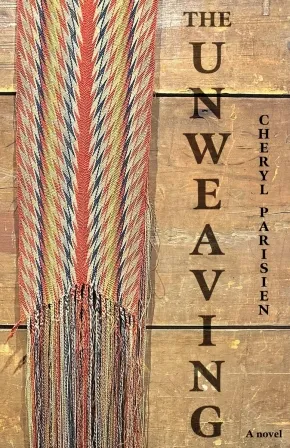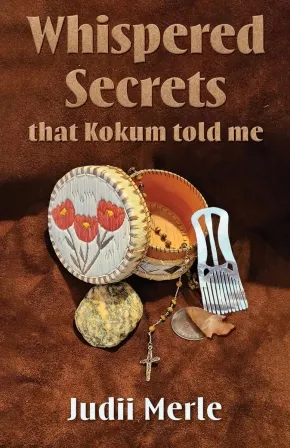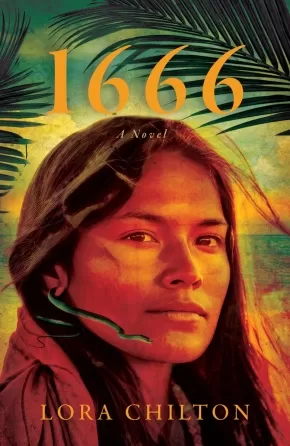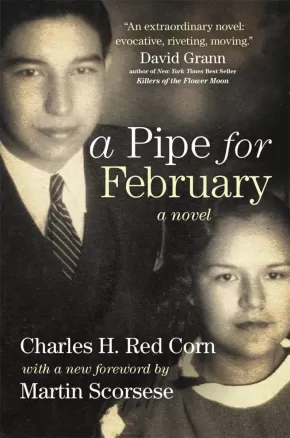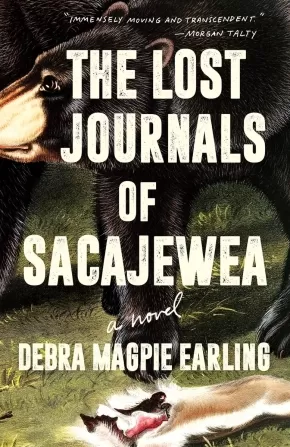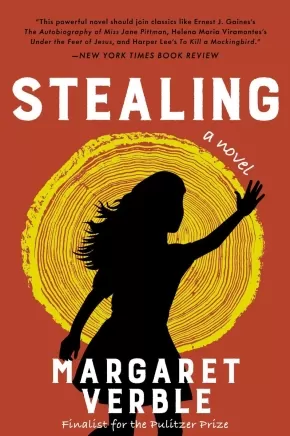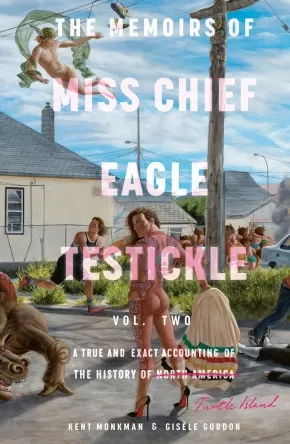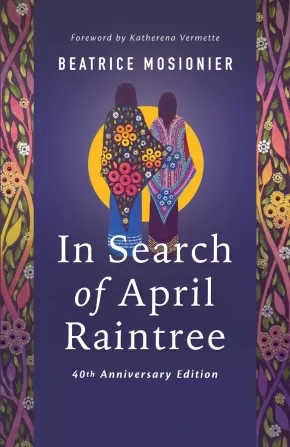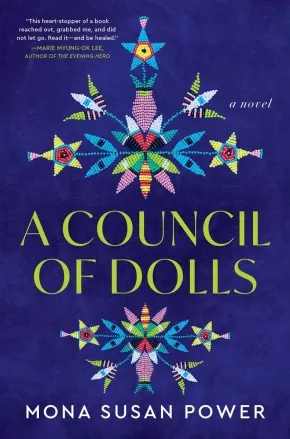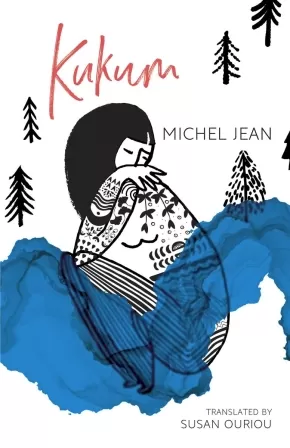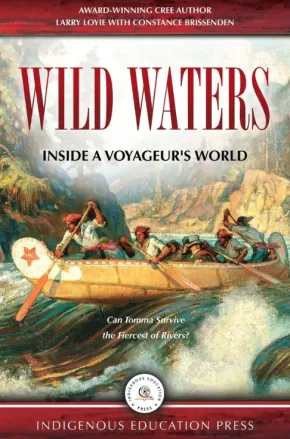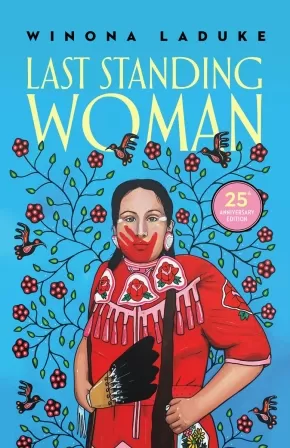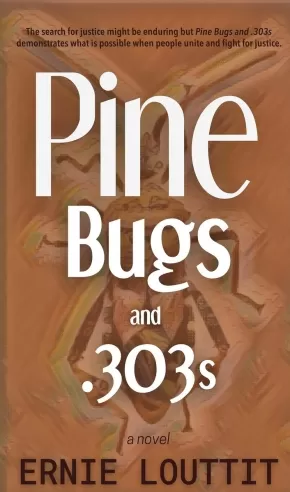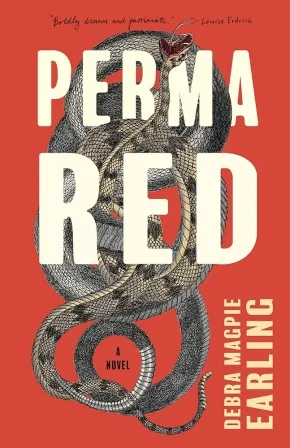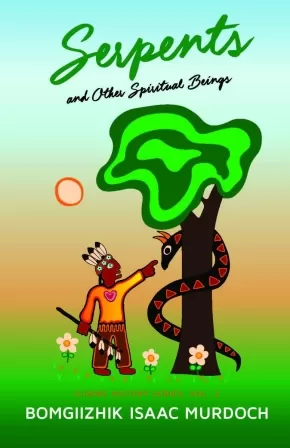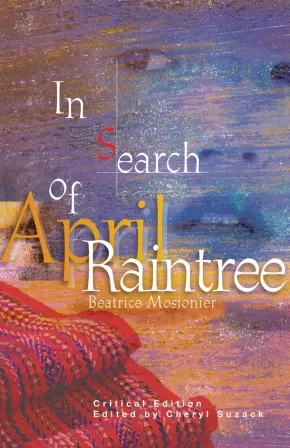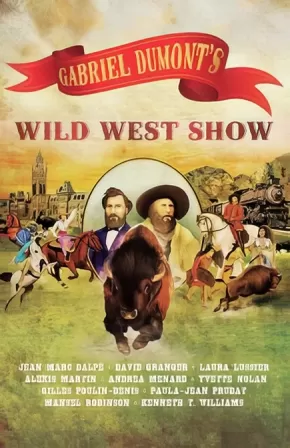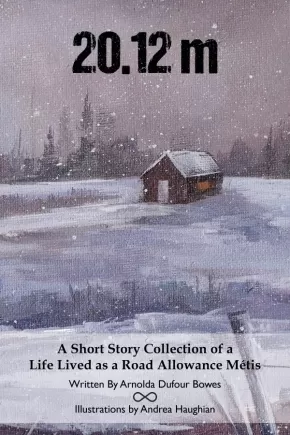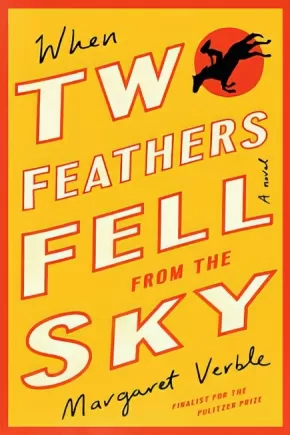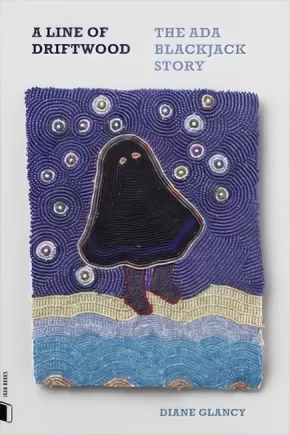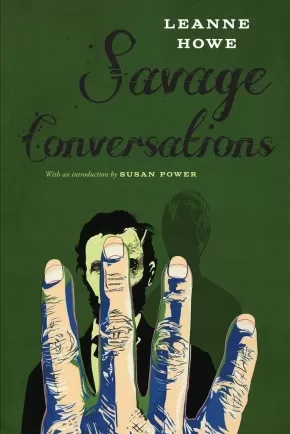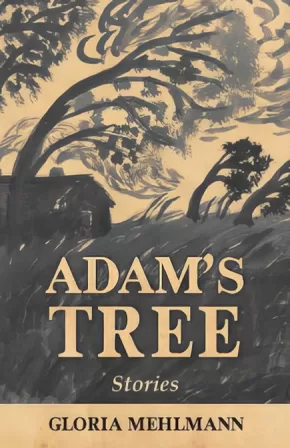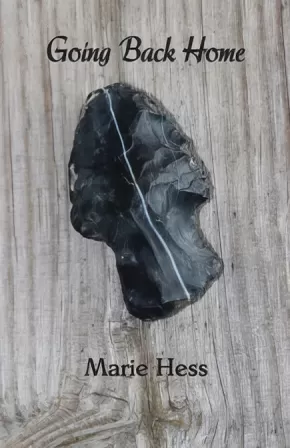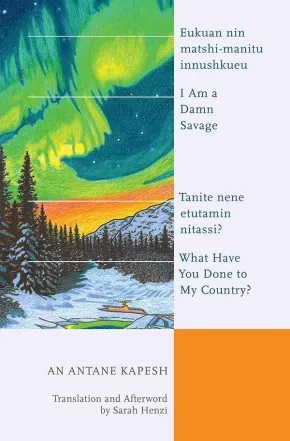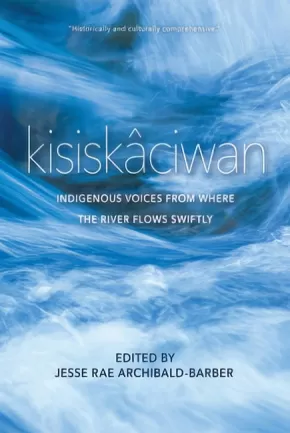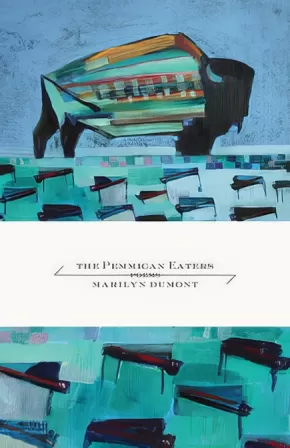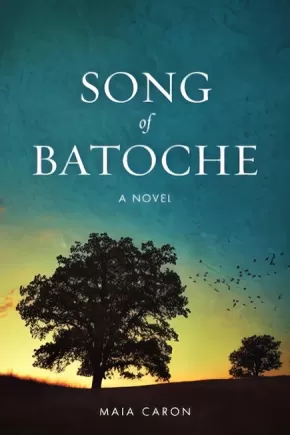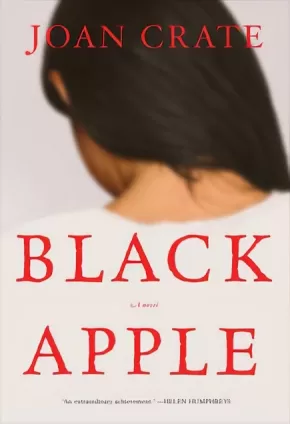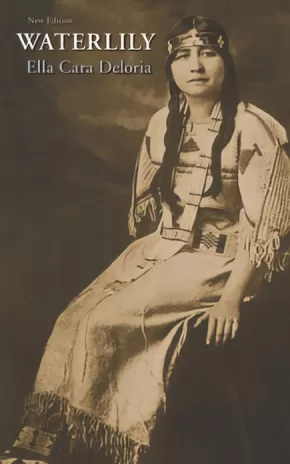
Historical Fiction
1
-
15
of
51 Results;
Sort By
Go To
of 4
The Wayfinder: A Novel
$42.00
Format:
Hardcover
Text Content Territories:
Indigenous Polynesian; Indigenous Tongan;
Reading Level: N/A
ISBN / Barcode: 9780374619572
Synopsis:
Synopsis:
A historical epic about a girl from a remote Tongan island who becomes her people's queen.
Talking corpses, poetic parrots, and a fan that wafts the breath of life—this is the world young Kōrero finds herself thrust into when a mysterious visitor lands on her island, a place so remote its inhabitants have forgotten the word for stranger. Her people are desperate and on the brink of starvation, and the wayward stranger offers them an impossible choice: they can remain in the only home they’ve ever known and await the uncertainty to come, or Kōrero can join him and venture into unfamiliar waters, guided by only the night sky and his assurance of a bountiful future in the Kingdom of Tonga. What Kōrero and her people don’t know is that the promised refuge is no utopia—instead, Tonga is an empire at war and on the verge of collapse, a place where brains are regularly liberated from skulls and souls get trapped in coconuts with some frequency.
The perils of Tonga are compounded by a royal feud: loyalties are shifting, graves are being opened, and everyone lives in fear of a jellyfish tattoo. Here, survival can rest on a perfectly performed dance or the acceptance of a cup of kava. Together, the stranger and Kōrero embark upon an epic voyage—one that will deliver them either to salvation or to the depths of the Pacific.
Evoking the grandeur of Wolf Hall and the splendor of Shōgun, the Pulitzer Prize–winning novelist Adam Johnson conjures oral history, restores the natural world, and locates what’s best in humanity. Toweringly ambitious and breathtakingly immersive, The Wayfinder is an instant, timeless classic.
Reviews
“A powerful and original epic . . . Deadly politics, tragic romance and dangerous sea journeys keep the drama at a spirited boil.”—The New York Times
“[An] epic-scale historical adventure from Pulitzer Prize winner Adam Johnson . . . Johnson paints a rich tale of nature, politics, and tradition . . . It's a unique, spellbinding saga that drew us into an elaborate world.”—Apple's Best of the Month
“Expansive in scope, historically detailed, and totally enthralling . . . Johnson's monumental research into the history, legacy, and imprint of the Polynesian culture is evident in the meticulous detail of his narrative—which is about much more than his characters, whose vibrancy demands acknowledgement, and his gorgeous landscape descriptions . . . Part bildungsroman, part historical exploration, this novel is a study of the many islands in the South Pacific, their power struggles, abuses of power, and the perseverance to survive.”—Booklist (starred review)
"Epic historical fiction with a twist of magical realism, The Wayfinder follows a Tongan royal family facing political upheaval and a community on a distant island facing starvation. It is a dual timeline with multiple viewpoints that makes you feel totally immersed in the story." — Goodreads Review, Shannon
Additional Information
736 pages | 6.00" x 9.00" | Hardcover
The Baby Train
$24.95
Format:
Paperback
Reading Level: N/A
ISBN / Barcode: 9781773661681
Synopsis:
Synopsis:
Thrust into the foster care system from an early age, Apple moves from house to house on Prince Edward Island without finding a home until she's a teenager and taken in by a couple who never managed to have children themselves. When she falls pregnant, her foster parents are keen to raise the baby with Apple still in the house—to live as a family.
That opportunity is torn from Apple by members of the Catholic Church along with social workers and government officials. Their vicious practices take the babies of unwed mothers and give them to wealthy families in exchange for large "donations" to the church. Apple's beloved baby ends up with a rich couple in the U.S., and is lost to her.
The Baby Train traces her life in the aftermath of that loss, raising subsequent children, creating deep bonds of friendship with other women struggling against society's rigid norms, and carrying underneath it all an unending love for her firstborn child.
We also follow her baby's path, and watch his affluent, neglected childhood and then adulthood unfold. He never knows that his birth mother still yearns for him, still lights him birthday candles every year.
The shameful legacy of forced and coerced adoption in Eastern Canada is brought to life in this sweeping novel.
Awards
- 2025 PMC Indigenous Literature Award Winner
Educator Information
PEI's birth alert practice allowed hospitals or social workers to flag expectant parents whom they felt might put their newborns at risk. Generally, this practice targeted Indigenous and unwed women.
Additional Information
224 pages | 5.75" x 8.00" | Paperback
The Last Secret: A Novel
$25.00
Format:
Paperback
Reading Level: N/A
ISBN / Barcode: 9780385688826
Synopsis:
Synopsis:
Ukraine, 1944
As the world around her is ripped apart by war and infiltrated by Nazi soldiers, Savka Ivanets works as a medic for the Ukrainian resistance, stitching wounds by day, stealing supplies by night, and dodging firefights between the SS and Soviet partisans. When her husband, Marko, a reluctant member of the Waffen-SS, forces her to deliver a coded message to an underground bunker, she’s terrified. But when her mission doesn’t go as planned, and her son, Taras, is kidnapped by the KGB, Savka fears she’ll never see him again.
Salt Spring Island, 1972
For Jeanie Esterhazy, the world, with its whispers and curious eyes, is too much to bear. Ever since the horrific accident that left her badly scarred, Jeanie, unable to remember anything about that awful day, has pulled away from society, utterly isolated.
Then a mysterious stranger appears at her house, and Jeanie suddenly begins having flashbacks about the night of her wedding—flashbacks that hold answers to the questions she’s had for years; flashbacks that make her realize the world around her is not as it seems.
Weaving together Savka and Jeanie's stories with artful precision, The Last Secret is at once luminous and transporting, a brilliant and impossible-to-forget story of love, hope, and the breathtaking resilience of women.
Reviews
"An extraordinarily powerful novel cinematically weaving one gripping layer into the next. From the frozen hellscape of Eastern Europe during WW2 to the lush green of Salt Spring Island in Canada, The Last Secret delivers a thrilling story of survival and love that held me spellbound throughout. Brava, Ms. Caron! An easy five stars." —Genevieve Graham, #1 bestselling author of The Forgotten Home Child
"How delicious to discover sleepy Salt Spring Island, BC, caught up in the icy tendrils of a Cold War thriller. Sweeping from hardship to heartache, The Last Secret is a timely reminder of the improbable bonds forged, broken and recast on World War II’s Eastern Front. Here, revenge is served tundra-cold, but with a dash of sea salt and fire." —Shelley Wood
Additional Information
416 pages | 6.09" x 8.91" | Paperback
The Memoirs of Miss Chief Eagle Testickle: Vol. 1: A True and Exact Accounting of the History of Turtle Island (PB)
$30.00
Format:
Paperback
Text Content Territories:
Indigenous Canadian; First Nations; Cree (Nehiyawak);
Reading Level: N/A
ISBN / Barcode: 9780771022814
Synopsis:
Synopsis:
From global art superstar Kent Monkman and his long-time collaborator Gisèle Gordon, a transformational work of true stories and imagined history that will remake readers’ understanding of the land called North America.
For decades, the singular and provocative paintings by Cree artist Kent Monkman have featured a recurring character—an alter ego of sorts, a shape-shifting, time-travelling elemental being named Miss Chief Eagle Testickle. Though we have glimpsed her across the years in films and on countless canvases, it is finally time to hear her story, in her own words. And, in doing so, to hear the whole history of Turtle Island anew. The Memoirs of Miss Chief Eagle Testickle: A True and Exact Accounting of the History of Turtle Island is a genre-demolishing work of genius, the imagined history of a legendary figure through which profound truths emerge—a deeply Cree and gloriously queer understanding of our shared world, its past, its present, and its possibilities.
Volume One, which covers the period from the creation of the universe to the confederation of Canada, follows Miss Chief as she moves through time, from a complex lived experience of Cree cosmology to the arrival of European settlers, many of whom will be familiar to students of history. An open-hearted being, she tries to live among those settlers, and guide them to a deeper understanding of the interconnectedness of all beings and the world itself. As their numbers grow, though, so does conflict, and Miss Chief begins to understand that the challenges posed by the hordes of newly arrived Europeans will mean ever greater danger for her, her people, and, by extension, all of the world she cherishes.
Blending history, fiction, and memoir in bold new ways, The Memoirs of Miss Chief Eagle Testickle are unlike anything published before. And in their power to reshape our shared understanding, they promise to change the way we see everything that lies ahead.
Reviews
"Long a persona stalking the paintings of provocative Cree artist Kent Monkman, Miss Chief Eagle Testickle steps off the canvas to tell her own story—and that of the Indigenous peoples of Turtle Island—in a two volume collaboration with Gisèle Gordon. Lavishly illustrated with Monkman’s paintings, The Memoirs of Miss Chief Eagle Testickle is at once (and seamlessly) a unique story of an even more unique deity, an exposition of nêhiyaw (Cree) beliefs and a primer in nêhiyawêwin (Cree Language), and a deeply researched history of contact, colonization, and resurgence. A full-blown remediation of the politically-charged and erotic world of Monkman’s paintings, these books educate, inspire, entertain, and leave the reader breathless."—Steve Collis, 2024 VMI Betsy Warland Between Genres Award judge
Additional Information
264 pages | 6.51" x 9.99"" | Full-colour art throughout | Paperback
Earthdivers, Vol. 3: 1776
$28.99
Artists:
Format:
Paperback
Text Content Territories:
Indigenous American; Native American;
Reading Level: N/A
ISBN / Barcode: 9798887241463
Synopsis:
Synopsis:
Join or die! New York Times best-selling author Stephen Graham Jones and artist Davide Gianfelice are back in action for the next chapter of their heart-pounding historical sci-fi slasher Earthdivers!
A team of time-traveling Indigenous survivors had one goal: save the world from an American apocalypse by sending one of their own on a suicide trip to kill Christopher Columbus and course-correct world history.
Mission accomplished? Maybe not. Blood is still soaking into the sands of San Salvador as Tad’s friends suffer the consequences of his actions—and their own slippery moral rationalizations—620 years in the future. Faced with a choice to watch the world crumble or double down on their cause, the path is clear for Seminole two-spirit Emily: it's personal now, and there’s no better time and place to take another stab at America than Philadelphia, 1776.
But where violence just failed them, she has a new plan: pass as a man, infiltrate the Founding Fathers, and use only wit and words to carve out a better future in the Declaration of Independence. No need to cut throats this time…right?
The next chapter of the critically acclaimed sci-fi epic is here in Earthdivers Vol. 3.
Series Information
This is the third book in the Earthdivers series, preceded by Earthdivers, Vol. 1: Kill Columbus and Earthdivers, Vol. 2: Ice Age.
Additional Information
208 pages | 6.69" x 10.25" | Paperback
The Buffalo Hunter Hunter
$26.99
Format:
Paperback
Text Content Territories:
Indigenous American; Native American; Blackfoot Confederacy (Siksikaitsitapi);
Reading Level: N/A
ISBN / Barcode: 9781668095485
Synopsis:
Synopsis:
In 1912 a strange confession is given, over several nights, to a Lutheran priest who transcribes the life of a vampire who haunted the fields of the Blackfeet reservation, looking for justice.
A diary, written in 1912 by a Lutheran Pastor is discovered within a wall and what it unveils is a slow massacre, a chain of events that go back to two hundred and seventeen Blackfeet dead in the snow. Told in transcribed confessions by a Blackfeet named Good Stab, who shared the narrative of his peculiar life over a series of confessional visits, this is a bloody history of the American West that has remained untold until now.
Reviews
“Stephen Graham Jones has lit a slow-burning candle that grows into a forest fire, illuminating the life of a Pikuni vampire and everyone he has touched, the pain of being a victim and perpetrator of violent history, and how memory serves to keep us who we are despite it all. The Buffalo Hunter Hunter is beautiful, terrifying, sad, funny, and grotesque — everything I want in a novel.”—Jessica Johns
“A master at blending horror, suspense, and culturally rich stories that are as thought-provoking as they are spine-tingling. Jones’s singular voice and exploration of identity, of trauma and survival, make every page pulse with kinetic urgency.”—David A. Robertson
“For me and vampires, there is Stoker, there is Rice, and now there is Jones. It's harrowing, agonizing, nuanced, and downright philosophical. Very likely Jones's masterpiece.”—Daniel Kraus, New York Times bestselling author of Whalefall
Additional Information
448 pages | 6.00" x 9.00" | Paperback
Brown Tom's Schooldays - 2nd Edition
$24.95
Editors:
Format:
Paperback
Text Content Territories:
Indigenous Canadian;
Reading Level: N/A
ISBN / Barcode: 9781772840865
Synopsis:
Synopsis:
Residential school life through the eyes of a child.
Enos Montour's Brown Tom's Schooldays, self-published in 1985, tells the story of a young boy's life at residential school. Drawn from Montour's first-hand experiences at Mount Elgin Indian Residential School between 1910 and 1915, the book is an ironic play on "the school novel," namely 1857's Tom Brown's Schooldays by Thomas Hughes.
An accomplished literary text and uncommon chronicle of federal Indian schooling in the early twentieth century, Brown Tom's Schooldays positions Brown Tom and his schoolmates as citizens of three worlds: the reserve, the "white man's world," and the school in between. It follows Tom leaving his family home, making friends, witnessing ill health and death, and enduring constant hunger.
Born at Six Nations of the Grand River in 1899, Montour earned degrees in Arts and Divinity at McGill University and served as a United Church minister for more than thirty years, honing his writing in newspapers and magazines and publishing two books of family history. Brown Tom's Schooldays reflects Montour's intelligence and skill as well as his love of history, parody, and literature.
This critical edition includes a foreword by the book's original editor, Elizabeth Graham, and an afterword by Montour's granddaughters, Mary Anderson and Margaret McKenzie. In her introduction, historian Mary Jane Logan McCallum documents Montour's life and work, details Brown Tom's Schooldays's publication history, and offers further insight into the operations of Mount Elgin. Entertaining and emotionally riveting, Montour's book opens a unique window into a key period in Canada's residential school history.
Reviews
"A fantastic read. People need more books like this, which are directly related to the TRC but are also a testament to the strength and creativity of Indigenous literature." — Crystal Fraser, University of Alberta
"Brown Tom's Schooldays is a literary artifact from the residential school era. In this fictionalized coming of age account, Enos Montour captures the youthful hopes, dreams, and disappointments of his real life upbringing at Mount Elgin, one of Canada's earliest and longest running residential schools. Unique in style, tone, and perspective, Schooldays is an important read for anyone interested in understanding the residential school system and for all of us who call the lower Great Lakes home." — Thomas Peace, Huron at Western University
Educator Information
This book is part of the First Voices, First Texts series.
Table of Contents
Foreword: On A Personal Note, The Making of Brown Tom’s Schooldays, 1982–1984 by Elizabeth Graham
Introduction: Enos Montour, Brown Tom, and “Ontario Indian” Literature by Mary Jane Logan McCallum
Brown Tom’s Schooldays by Enos Montour
Chapter 1: Salad Days
Chapter 2: Brown Tom Arrives
Chapter 3: Brown Tom's Three Worlds
Chapter 4: The Milling Herd
Chapter 5: Loaf 'n' Lard
Chapter 6: Brown Tom Makes a Deal
Chapter 7: Too Big for Santa Claus
Chapter 8: Brown Tom's Happy Days
Chapter 9: Trial By Fire
Chapter 10: Brown Tom "Has It Bad"
Chapter 11: Brown Tom Gets Religion
Chapter 12: The Roar of Mighty Waters
Chapter 13: Happy Hunting Ground for Noah
Chapter 14: War Clouds Over Mt. Elgin
Chapter 15: Brown Tom "Arrives"
Afterword by Mary Anderson and Margaret McKenzie
Appendix 1: Glossary of Idioms and References in Brown Tom’s Schooldays
Appendix 2: Bibliography of Works by Enos Montour
Endnotes
Bibliography
Additional Information
216 pages | 5.50" x 8.50" | 20 b&w illustrations, 3 maps | Paperback
Woman of Light: A Novel
$24.95
Format:
Paperback
Text Content Territories:
Indigenous American; Native American;
Reading Level: N/A
ISBN / Barcode: 9780525511335
Synopsis:
Synopsis:
There is one every generation, a seer who keeps the stories.
Luz “Little Light” Lopez, a tea leaf reader and laundress, is left to fend for herself after her older brother, Diego, a snake charmer and factory worker, is run out of town by a violent white mob. As Luz navigates 1930s Denver, she begins to have visions that transport her to her Indigenous homeland in the nearby Lost Territory. Luz recollects her ancestors’ origins, how her family flourished, and how they were threatened. She bears witness to the sinister forces that have devastated her people and their homelands for generations. In the end, it is up to Luz to save her family stories from disappearing into oblivion.
Written in Kali Fajardo-Anstine’s singular voice, the wildly entertaining and complex lives of the Lopez family fill the pages of this multigenerational western saga. Woman of Light is a transfixing novel about survival, family secrets, and love—filled with an unforgettable cast of characters, all of whom are just as special, memorable, and complicated as our beloved heroine, Luz.
Additional Information
352 pages | 5.17" x 7.96" | Paperback
The Forgotten Frontier
$24.95
Artists:
Format:
Paperback
Text Content Territories:
Indigenous American; Native American; Apache;
Reading Level: N/A
ISBN / Barcode: 9781998779437
Synopsis:
Synopsis:
Ela Tahoe, a runaway turned deputy sheriff, is forced to contend with a Confederate invasion of her New Mexican town three months after the conclusion of the Civil War. Ela will need to confront her heritage and past with the Apache in order to get their aid to combat this Confederate threat, leading her to look at the world from the Native American perspective once again. Conceived as a tightly paced, gut wrenching western thriller, Ela fights tooth and nail to save the lives of her townspeople and most importantly, her son.
The American Western Frontier is arguably one of the most widely misrepresented histories, rife with inaccuracies and stereotypes. Black Mi'kmaq and Anishinaabe author Tristan Jones powerfully and critically reimagines and reclaims a historical retelling of the Frontier with a focus on the historically missing Indigenous narrative. Illustrated by master sequential artist Alexander Bumbulut, The Forgotten Frontier should be on everyone's reading list.
Additional Information
140 pages | 6.00" x 9.00" | Paperback
The Unweaving: A Novel
$24.95
Format:
Paperback
Text Content Territories:
Indigenous Canadian; Métis;
ISBN / Barcode: 9781990160400
Synopsis:
Synopsis:
Threatened by encroaching colonialism, one Métis family struggles to protect their way of life.
In 1869, the arrival of surveyors from the new Dominion of Canada sends ripples of anxiety through the people of Red River. As the Métis Nation begins negotiating terms for joining Confederation, each member of the Rougeau family adapts in their own way: Clément looks outward, trying to maintain his livelihood as a carter, while his wife, Marienne, looks inward, determined to hold their fracturing family together. Julien, the eldest son, joins Louis Riel to confront the same intruders that so impress his sister, Charlotte. As the Red River Resistance unfolds, the consequences of each choice become heartbreakingly clear.
Additional Information
256 pages | 5.50" x 8.50" | Paperback
Whispered Secrets That Kokum Told Me
$23.95
Format:
Paperback
Text Content Territories:
Indigenous Canadian;
Reading Level: N/A
ISBN / Barcode: 9781990326424
Synopsis:
Synopsis:
In the ages and eons before settlers descended upon Turtle Island, Indigenous people made their homes here, among the trees, rivers, lakes and mountains. Babies were born; people died during famine and war; families roamed from one gathering place to another, always in search of food that would help them survive another winter. Four-leggeds, fliers, swimmers and crawlers provided meat; the standing people, bushes and plants took care of the rest. The water, cold and clear, was available to everyone. Mother Earth supplied everything needed to sustain the inhabitants, and Creator of All watched over their comings and goings. Life was hard, but joy also abounded.
Although a work of fiction, this might have been the story of my family . . . or yours.
Additional Information
248 pages | 5.50" x 8.50" | Paperback
The Cannibal
$22.95
Artists:
Format:
Paperback
Text Content Territories:
Indigenous Canadian; Inuit;
ISBN / Barcode: 9781772274813
Synopsis:
Synopsis:
Based on an Inuit traditional story passed down orally for generations, The Cannibal tells the horrific tale of a family experiencing starvation when the animals they rely on for survival disappear. While the wife stays alive by eating plants she gathers daily, the husband does the unthinkable, resorting to murder and cannibalism. Horrified, and terrified for her life, the wife eventually finds herself alone in camp with her husband. She knows what will happen to her if she does not find a way to escape. Hatching a plan, the exhausted wife embarks on the journey with her murderous husband in pursuit. After safely arriving at a nearby camp, she shares the story of what has become of her camp, and her own children. Soon the husband arrives, and the camp must decide how to deal with the cannibal. Both horrific and poignant, this cautionary traditional story provides a window into the at times harsh realities of traditional life.
Reviews
"The Cannibal by Solomon Awa and Louise Flaherty is a stark and compelling novel centred on an Inuit family facing extreme survival challenges in the Arctic. When the family’s father, driven by desperation, begins to resort to cannibalism to stay alive, the story delves into harrowing themes of survival, morality, and the impact of isolation on human behaviour. This topic is suitable for an older audience, not younger students." - David D., Indigenous Educator & Administrator, Indigenous Books for Schools
Educator Information
The publisher labels this work as an "Adult Graphic Novel."
Recommended in the Indigenous Books for Schools catalogue as a valuable resource for grades 10 to 12 for English Language Arts and Social Studies.
Themes: Animals, Death, Environment, Loss, Reconciliation
Caution: Contains cannibalism
Additional Information
44 pages | 7.00" x 10.50" | Paperback
1666: A Novel
$25.95
Format:
Paperback
Text Content Territories:
Indigenous American; Native American; Patawomeck Indian Tribe of Virginia (Potomac People);
Reading Level: N/A
ISBN / Barcode: 9781960573957
Synopsis:
Synopsis:
A Fictional Recounting of the Survival Story of Patawomeck Tribe of Virginia
The story has been remembered within the Patawomeck tribe for generations, but is largely unknown outside of the tribe until now. Author Lora Chilton, a tribal member through the lineage of her father, has created this powerful fictional retelling.
The story follows three Indigenous Patawomeck women who lived through the decimation of their tribe by land hungry colonists in the summer of 1666, the massacre of their men, the harrowing march south where they and their children were sold and transported to Barbados via slave ship, and, eventually, their brave escape back to Virginia. It is because of these women that the tribe is in existence to this day.
This work of historical fiction is based on oral tradition, interviews with tribal elders, written colonial records and extensive research by the author, including study of the language. The book uses Indigenous names for the characters and some Patawomeck words to honor the culture and heritage that was erased when European colonization of the Americans began in the 16th century.
Reviews
"Packed with Indigenous culture and customs and sprinkled with tribal terminology, the narrative is vivid, magnetic, and chilling. The author is herself a Patawomeck descendant, and she’s combined scant available written records with tribal oral history to inform her creation of two emotionally powerful, vibrant female protagonists….plenty of action, tears, cheers, and historical detail work to keep the pages turning. A disturbing, absorbing, and valuable addition to the literature of cruelty inflicted upon Indigenous peoples."—Kirkus Reviews
“Focusing on the experiences of three Patawomeck women in the latter half of the seventeenth century, Chilton, in 1666 : A Novel, draws on contemporary scholarship regarding Patawomeck and Virginia Algonquian history, culture, and language to develop her characters and add depth to their stories. It is refreshing to read a story about Virginia Indian women in the seventeenth century that avoids the glamorized, sexualized, and racialized Pocahontas mythology and instead centers on the experiences of those everyday people who may not have been so well-known to colonizers but are the true ancestors of most Virginia Indians…. A fast-paced novel that takes the reader through numerous Atlantic landscapes from the traditional Patawomeck homelands along Potomac Creek, to Barbados, to New York, 1666 illustrates the interconnectedness of the early Modern world and its people." —Dr. Brad Hatch, Patawomeck Tribal Historian and Tribal Council Member
"In this debut novel by Lora Chilton, 1666: A Novel, we are introduced to a history based account of two brave Indigenous women of the Patawomeck tribe, who are abducted from their native Virginia home in 1666 and enslaved under the brutal 'Master' and 'Mistress' of the plantations in Barbados. A page-turning marvel of a historical novel! Otherwise, the shameful erasure of the Patawomeck would have been maintained." —Diana Y. Paul, author of Things Unsaid
Additional Information
224 pages | 5.32" x 8.46" | Paperback
A Pipe for February: A Novel
$33.95
Format:
Paperback
Text Content Territories:
Indigenous American; Native American; Osage;
Grade Levels: University/College;
ISBN / Barcode: 9780806137261
Synopsis:
Synopsis:
"A Pipe for February is an extraordinary novel: evocative, riveting, moving. Charles Red Corn illuminates what the Osage people went through during the 1920s, when oil profits had made them fabulously wealthy and when they began to die under mysterious circumstances—systematically targeted for their money. This novel, exquisitely written and filled with revelations, will hold you in its grip and never let you go.”—David Grann, author of New York Times Best Seller Killers of the Flower Moon
At the turn of the twentieth century, the Osage Indians owned Oklahoma’s most valuable oil reserves and became members of the world’s first wealthy oil population. Osage children and grandchildren continued to respect the old customs and ways, but now they also had lives of leisure: purchasing large homes, expensive cars, eating in fancy restaurants, and traveling to faraway places. In the 1920s, they also found themselves immersed in a series of murders. Charles H. Red Corn sets A Pipe for February against this turbulent, exhilarating background.
Tracing the experiences of John Grayeagle, the story’s main character, Red Corn describes the Osage murders from the perspective of a traditonal Osage. Other books on the notorious crimes have focused on the greed of government officials and businessmen to increase their oil wealth. Red Corn focuses on the character of the Osage people, drawing on his own experiences and insights as a member of the Osage Nation.
In the new foreword, director Martin Scorsese reveals how reading A Pipe for February helped him better understand the Osage people and bring Killers of the Flower Moon to the screen.
Reviews
"A Pipe for February is an extraordinary novel: evocative, riveting, moving. Charles Red Corn illuminates what the Osage people went through during the 1920s, when oil profits had made them fabulously wealthy and when they began to die under mysterious circumstances—systematically targeted for their money. This novel, exquisitely written and filled with revelations, will hold you in its grip and never let you go"—David Grann, author of Killers of the Flower Moon—a New York Times #1 bestseller—and award-winning staff writer at The New Yorker
“A Pipe for February subtly weaves together some of the richest themes of contemporary American Indian Literature.” —Robert Warrior, author of Tribal Secrets: Recovering American Indian Intellectual Traditions
Additional Information
284 pages | 5.50" x 8.50" | Paperback
Flight: A Novel
$27.50
Format:
Paperback
Text Content Territories:
Indigenous American; Native American;
Reading Level: N/A
ISBN / Barcode: 9780802170378
Synopsis:
Synopsis:
The best-selling author of multiple award-winning books returns with his first novel in ten years, a powerful, fast and timely story of a troubled foster teenager — a boy who is not a “legal” Indian because he was never claimed by his father — who learns the true meaning of terror. About to commit a devastating act, the young man finds himself shot back through time on a shocking sojourn through moments of violence in American history. He resurfaces in the form of an FBI agent during the civil rights era, inhabits the body of an Indian child during the battle at Little Big Horn, and then rides with an Indian tracker in the 19th Century before materializing as an airline pilot jetting through the skies today. When finally, blessedly, our young warrior comes to rest again in his own contemporary body, he is mightily transformed by all he’s seen. This is Sherman Alexie at his most brilliant — making us laugh while breaking our hearts. Simultaneously wrenching and deeply humorous, wholly contemporary yet steeped in American history, Flight is irrepressible, fearless, and again, groundbreaking Alexie.
Additional Information
208 pages | 5.50" x 8.25" | Paperback
Earthdivers, Vol. 2: Ice Age
$21.99
Artists:
Format:
Paperback
Text Content Territories:
Indigenous American; Native American;
Reading Level: N/A
ISBN / Barcode: 9798887240688
Synopsis:
Synopsis:
Guest artists Riccardo Burchielli (DMZ), Patricio Delpeche, and Emily Schnall join Stephen Graham Jones—New York Times best-selling author of The Only Good Indians and My Heart Is a Chainsaw—for a mission to the Ice Age exploring America’s pre-Columbian past!
When Martin and Tawny’s children disappeared, the couple barreled into the desert to track them down at any cost. Instead, they ran afoul of another group of rovers who claimed to be saving the world by traveling through a cave portal to the year 1492 to prevent the creation of America—an idea that defied belief until the grieving parents were lured into the cave and vanished in time and space.
Now alone, Tawny must adapt to the wild marshlands of prehistoric Florida, circa 20,000 BC, and the breathtaking and bloodthirsty megafauna are the least of her problems when she’s caught in a war between a community of native Paleo-Indians and an occupying Solutrean force. Tawny’s odds of survival are in free fall, but she’s a mother on a mission…and she’s holding on to hope that the cave brought her here for a family reunion.
In the tradition of Saga, the next chapter of the critically acclaimed sci-fi epic is here in Earthdivers Vol. 2.
Series Information
This is the second book in the Earthdivers series.
Additional Information
104 pages | 6.62" x 10.18" | Paperback
The Lost Journals of Sacajewea: A Novel (HC) (1 in Stock)
$39.95
Format:
Hardcover
Text Content Territories:
Indigenous American; Native American; Shoshone;
Reading Level: N/A
ISBN / Barcode: 9781571311450
Synopsis:
Synopsis:
“In my seventh winter, when my head only reached my Appe’s rib, a White Man came into camp. Bare trees scratched sky. Cold was endless. He moved through trees like strikes of sunlight. My Bia said he came with bad intentions, like a Water Baby’s cry.”
Among the most memorialized women in American history, Sacajewea served as interpreter and guide for Lewis and Clark’s Corps of Discovery. In this visionary novel, acclaimed Indigenous author Debra Magpie Earling brings this mythologized figure vividly to life, casting unsparing light on the men who brutalized her and recentering Sacajewea as the arbiter of her own history.
Raised among the Lemhi Shoshone, in this telling the young Sacajewea is bright and bold, growing strong from the hard work of “learning all ways to survive”: gathering berries, water, roots, and wood; butchering buffalo, antelope, and deer; catching salmon and snaring rabbits; weaving baskets and listening to the stories of her elders. When her village is raided and her beloved Appe and Bia are killed, Sacajewea is kidnapped and then gambled away to Charbonneau, a French Canadian trapper.
Heavy with grief, Sacajewea learns how to survive at the edge of a strange new world teeming with fur trappers and traders. When Lewis and Clark’s expedition party arrives, Sacajewea knows she must cross a vast and brutal terrain with her newborn son, the white man who owns her, and a company of men who wish to conquer and commodify the world she loves.
Written in lyrical, dreamlike prose, The Lost Journals of Sacajewea is an astonishing work of art and a powerful tale of perseverance—the Indigenous woman’s story that hasn’t been told.
Reviews
“[In The Lost Journals of Sacajewea] the suffering—and bold, ingenious agency—of women held as captives by both Native and Euro-Americans is rendered with special vividness [. . .] The narration is rich in realistic detail but animated by a dreamlike intensity [. . .] Throughout the text, Sacajewea memorably enacts what Gerald Vizenor dubs survivance, the negotiation of existential challenges with a spirited, oppositional inventiveness. A profoundly moving imagining of the impressions and contributions of a major historical figure."—Kirkus Reviews, starred review
"Earling adds a much-needed Native woman’s perspective to Sacajewea’s story, bringing a note of resilience to her unflinching account of the white men’s violence and depredation: 'Women do not become their Enemy captors. We survive them.' This is a beautiful reclamation."—Publishers Weekly
[The Lost Journals of Sacajewea] offers new perspective on what is known, and debated, about the life of Sacajewea, including her age, her marriage to a French fur-trader (Toussaint Charbonneau), and her experience as the only woman traveling on the 1804-1806 Corp of Discovery expedition with Meriwether Lewis and William Clark. In poetic prose, Earling interweaves factual accounts of Sacajewea’s life with a first-person narrative deeply rooted in the physicality of landscape and brutality of the times”—Jessica Gigot, Seattle Times
“[The Lost Journals of Sacajewea is] an impressionistic, poetic account, one that vividly renders external hardships and internal thoughts, giving equal weight to each. [. . .] it delivers a uniquely thorough perspective on the mind of a particular young woman, both ordinary and extraordinary. In this way, we come to understand Sacajewea more deeply—certainly more than we understand the men of famous names like Lewis and Clark. lt’s a book to enjoy like a river: you give yourself over to it and follow where it takes you.”—Greer Macallister, Chicago Review of Books
Additional Information
264 pages | 5.50" x 8.50"
Earthdivers, Vol. 1: Kill Columbus
$23.99
Artists:
Format:
Paperback
Text Content Territories:
Indigenous American; Native American;
ISBN / Barcode: 9798887240459
Synopsis:
Synopsis:
The New York Times–bestselling author of The Only Good Indians and My Heart Is a Chainsaw makes his comics debut with this time-hopping horror thriller about far-future Indigenous outcasts on a mission to kill Christopher Columbus.
The year is 2112, and it’s the apocalypse exactly as expected: rivers receding, oceans rising, civilization crumbling. Humanity has given up hope, except for a group of Indigenous outcasts who have discovered a time travel portal in a cave in the desert and figured out where everything took a turn for the worst: America.
Convinced that the only way to save the world is to rewrite its past, they send one of their own—a reluctant linguist named Tad—on a bloody, one-way mission to 1492 to kill Christopher Columbus before he reaches the so-called New World. But there are steep costs to disrupting the timeline, and taking down an icon isn’t an easy task for an academic with no tactical training and only a wavering moral compass to guide him. As the horror of the task ahead unfolds and Tad’s commitment is tested, his actions could trigger a devastating new fate for his friends and the future.
Join Stephen Graham Jones and artist Davide Gianfelice for Earthdivers, Vol. 1 (collecting Earthdivers issues #1-6), the beginning of an unforgettable ongoing sci-fi slasher spanning centuries of America’s Colonial past to explore the staggering forces of history and the individual choices we make to survive it.
Reviews
"Earthdivers is why I read comics–a timely concept told boldly; a strong debut by Stephen Graham Jones who proves a voice to watch with something to say; and career work by Davide Gianfelice, a veteran artist who was already light years ahead of his peers." –Pornsak Pichetshote, author of The Good Asian
“A time-twisting trip you don't want to miss! Myths, mayhem and history-altering murders ahoy!” –Cavan Scott, author of Dead Seas
“Earthdivers feels fresh, compelling, and bold…It’s a comic that stands head and shoulders apart from the rest of the pack on the shelves. Don’t wait for the trade – this is an urgent comic that begs to be read.” –Comic Watch
“Stephen Graham Jones enters the comics scene with a dense but fascinating and well-paced comic with a tasty dash of political commentary, as every great science fiction story should have. The visuals from Davide Gianfelice and Joana Lafuente are well-directed and stunningly detailed, making for a wholly immersive reading experience.” –Monkeys Fighting Robots
Series Information
This is the first book in the Earthdivers series.
Additional Information
176 pages | 6.69" x 10.19" | Paperback
Stealing: A Novel (PB)
$24.00
Format:
Paperback
Text Content Territories:
Indigenous American; Native American; Cherokee;
Reading Level: N/A
ISBN / Barcode: 9780063267091
Synopsis:
Synopsis:
A gripping, gut-punch of a novel about a Cherokee child removed from her family and sent to a Christian boarding school in the 1950s—an ambitious, eye-opening reckoning of history and small-town prejudices from Pulitzer Prize finalist Margaret Verble.
Since her mother’s death, Kit Crockett has lived with her grief-stricken father, spending lonely days far out in the country tending the garden, fishing in a local stream, and reading Nancy Drew mysteries from the library bookmobile. One day when Kit discovers a mysterious and beautiful woman has moved in just down the road, she is intrigued.
Kit and her new neighbor Bella become fast friends. Both outsiders, they take comfort in each other’s company. But malice lurks near their quiet bayou and Kit suddenly finds herself at the center of tragic, fatal crime. Soon, Kit is ripped from her home and Cherokee family and sent to Ashley Lordard, a religious boarding school. Along with the other Native students, Kit is stripped of her heritage, force-fed Christian indoctrination, and is sexually abused by the director. But Kit, as strong-willed and shrewd as ever, secretly keeps a journal recounting what she remembers—and revealing just what she has forgotten. Over the course of Stealing, she slowly unravels the truth of how she ended up at the school—and plots a way out.
In swift, sharp, and stunning prose, Margaret Verble spins a powerful coming-of age tale and reaffirms her place as an indelible storyteller and chronicler of history.
Reviews
"Verble tells a memorable and sobering story about injustice, hypocrisy, and resilience. Verble upholds her legacy of indelible Cherokee characters—and weaves a dynamic mystery, too.”— Kirkus Reviews
Additional Information
256 pages | 5.31" x 8" | Paperback
The Memoirs of Miss Chief Eagle Testickle: Vol. 2: A True and Exact Accounting of the History of Turtle Island (HC) (3 in Stock)
$44.00
Format:
Hardcover
Text Content Territories:
Indigenous Canadian; First Nations; Cree (Nehiyawak);
Reading Level: N/A
ISBN / Barcode: 9780771006470
Synopsis:
Synopsis:
From global art superstar Kent Monkman and his longtime collaborator Gisèle Gordon, a transformational work of true stories and imagined history that will remake readers' understanding of the land called North America.
For decades, the singular and provocative paintings by Cree artist Kent Monkman have featured a recurring character—an alter ego of sorts, a shape-shifting, time-travelling elemental being named Miss Chief Eagle Testickle. Though we have glimpsed her across the years, and on countless canvases, it is finally time to hear her story, in her own words. And, in doing so, to hear the whole history of Turtle Island anew. The Memoirs of Miss Chief Eagle Testickle: A True and Exact Accounting of the History of Turtle Island is a genre-demolishing work of genius, the imagined history of a legendary figure through which a profound truths emerge—a deeply Cree and gloriously queer understanding of our shared world, its past, its present, and its possibilities.
Volume Two, which takes us from the moment of confederation to the present day, is a heartbreaking and intimate examination of the tragedies of the nineteenth and twentieth century. Zeroing in on the story of one family told across generations, Miss Chief bears witness to the genocidal forces and structures that dispossessed and attempted to erase Indigenous peoples. Featuring many figures pulled from history as well as new individuals created for this story, Volume Two explores the legacy of colonial violence in the children’s work camps (called residential schools by some), the Sixties Scoop, and the urban disconnection of contemporary life. Ultimately, it is a story of resilience and reconnection, and charts the beginnings of an Indigenous future that is deeply rooted in an experience of Indigenous history—a perspective Miss Chief, a millennia-old legendary being, can offer like none other.
Blending history, fiction, and memoir in bold new ways, The Memoirs of Miss Chief Eagle Testickle are unlike anything published before. And in their power to reshape our shared understanding, they promise to change the way we see everything that lies ahead.
Additional Information
264 pages | 6.79" x 10.26" | Hardcover
In Search of April Raintree: 40th Anniversary Edition
$22.95
Format:
Paperback
Text Content Territories:
Indigenous Canadian; Métis;
Reading Level: N/A
ISBN / Barcode: 9781774920916
Synopsis:
Synopsis:
Memories. Some memories are elusive, fleeting, like a butterfly that touches down and is free until it is caught. Others are haunting. You'd rather forget them, but they won't be forgotten. And some are always there. No matter where you are, they are there, too.
In this moving story of legacy and reclamation, two young sisters are taken from their home and family. Powerless in a broken system, April and Cheryl are separated and placed in different foster homes. Despite the distance, they remain close, even as their decisions threaten to divide them emotionally, culturally, and geographically. As one sister embraces her Métis identity, the other tries to leave it behind.
Will the sisters’ bond survive as they struggle to make their way in a society that is often indifferent, hostile, and violent?
Beloved for more than 40 years, In Search of April Raintree is a timeless story that lingers long after the final page. This anniversary edition features a foreword by Governor General’s Award–winning author Katherena Vermette, and an afterword by University of Regina professor, Dr. Raven Sinclair (Ôtiskewâpit), an expert on Indigenous child welfare.
Educator Information
This 40th anniversary edition features a foreword by Governor General’s Award–winning author Katherena Vermette, and an afterword by University of Regina professor, Dr. Raven Sinclair (Ôtiskewâpit), an expert on Indigenous child welfare.
A critical edition of this work, which includes ten critical essays accompanying the text, is available here: In Search of April Raintree: Critical Edition
A version written specifically for students in grades 9-12 that does not contain the graphic scene that is contained in this original version is available here: April Raintree
Find a teacher guide for In Search of April Raintree and April Raintree here: Teacher Guide for In Search of April Raintree and April Raintree: A Trauma-Informed Approach to Teaching Stories of Indigenous Survivance, Family Separation, and the Child Welfare System
Additional Information
343 pages | 5.50" x 8.50" | Paperback | Critical Edition
A Council of Dolls: A Novel (HC) (3 in Stock)
$37.00
Format:
Hardcover
Text Content Territories:
Indigenous American; Native American; Sioux; Dakota; Yankton (Yanktonai);
Grade Levels: 12; University/College;
ISBN / Barcode: 9780063281097
Synopsis:
Synopsis:
The long-awaited, profoundly moving, and unforgettable new novel from PEN Award–winning Native American author Mona Susan Power, spanning three generations of Yanktonai Dakota women from the 19th century to the present day.
From the mid-century metropolis of Chicago to the windswept ancestral lands of the Dakota people, to the bleak and brutal Indian boarding schools, A Council of Dolls is the story of three women, told in part through the stories of the dolls they carried….
Sissy, born 1961: Sissy’s relationship with her beautiful and volatile mother is difficult, even dangerous, but her life is also filled with beautiful things, including a new Christmas present, a doll called Ethel. Ethel whispers advice and kindness in Sissy’s ear, and in one especially terrifying moment, maybe even saves Sissy’s life.
Lillian, born 1925: Born in her ancestral lands in a time of terrible change, Lillian clings to her sister, Blanche, and her doll, Mae. When the sisters are forced to attend an “Indian school” far from their home, Blanche refuses to be cowed by the school’s abusive nuns. But when tragedy strikes the sisters, the doll Mae finds her way to defend the girls.
Cora, born 1888: Though she was born into the brutal legacy of the “Indian Wars,” Cora isn’t afraid of the white men who remove her to a school across the country to be “civilized.” When teachers burn her beloved buckskin and beaded doll Winona, Cora discovers that the spirit of Winona may not be entirely lost…
A modern masterpiece, A Council of Dolls is gorgeous, quietly devastating, and ultimately hopeful, shining a light on the echoing damage wrought by Indian boarding schools, and the historical massacres of Indigenous people. With stunning prose, Mona Susan Power weaves a spell of love and healing that comes alive on the page.
Reviews
“A Council of Dolls reached out, grabbed me and did not let go. Power’s ability to make language sing, cry, scream, and laugh illuminates this heartstopper of a book that shines a light into the dark corners of America’s history. I wanted the generational journey I was taking with these unforgettable characters—and their dolls—to never end. Read it--and be healed." — Marie Myung-Ok Lee, author of The Evening Hero
“A Council of Dolls absorbs through the skin, enters the bone, and disperses through the psyche—it perfectly captures the internal roots of the Native experience. Through the lives of three Dakota women, we grapple with the emotional, psychological, and spiritual toll on Indigenous peoples enduring an often brutal system and, moreover, how strength, healing, and love reverberate down each passing generation to dispense hope and resiliency. I cannot more highly recommend Power’s newest masterpiece.” — Oscar Hokeah, PEN/Hemingway award-winning author of Calling for a Blanket Dance
"Mona Susan Power’s new novel is an honor song to the love and strength of Native families and our stories, to our brilliant selves. I couldn’t have known how much I needed the wisdom and offerings of these pages." — Kelli Jo Ford, author of Crooked Hallelujah
“This tender and magical novel will stay with me for a long time. Mona Susan Power writes with dazzling empathy. The result is a heart-rending and many-layered narrative, a captivating story which is also a thrilling testimonial to the power of stories.” — Margot Livesey, author of The Boy in the Field
"A resplendent novel about the spirited lives of three inspiring women who endure significant change and hardship. Each story so deeply compelling I wanted to read quickly but was magnetized by the transformative power of each voice. A mighty, dazzling whirlwind of storytelling. These stories lift from the page. Prepare to stay up all night. A Council of Dolls is mesmerizing. Take a deep breath! Mona Susan Power can peer into darkness and transform it." — Debra Magpie Earling — Debra Magpie Earling
“A work of exquisite beauty and courageous truth-telling, and an unforgettable homage to ancestral suffering and strength.”
— Sheila O’Connor, author of Evidence of V
“A talent like Susan Power comes along once in a lifetime, and lucky for us she's arrived. Here is a debut so stunning, so extraordinary in its depth and passion, you will swear there's a miracle on every page.” — Alice Hoffman, on The Grass Dancer
"This book is well-written. It includes elements of historical fiction and a bit of real life horror. The role of the dolls in these women's lives was the most thought-provoking aspect of the novel. It added a bit of a fantasy element to the story. I wondered what the author's intention was. The dolls seem to be symbolic in addition to invisible friends for the girls. They were also silent, supposedly inanimate witnesses to what the young women experienced. The parts of the story told from the dolls' POV were especially intriguing. I enjoyed the section about how the Shirley Temple doll was made, and the doll was presented as self-aware. The author wove mystery and symbolism around the dolls without being blatant. She left readers room to make their own interpretations. I really enjoyed and appreciated that. The book is also full of interesting philosophical statements." - Claudia, Goodreads Review
Additional Information
304 pages | 6.00" x 9.00" | Hardcover
Kukum
$22.99
Format:
Paperback
Text Content Territories:
Indigenous Canadian; First Nations; Innu (Montagnais-Naskapi); Mashteuiatsh (Pekuakamiulnuatsh);
Reading Level: N/A
ISBN / Barcode: 9781487010904
Synopsis:
Synopsis:
A Quebec bestseller based on the life of Michel Jean's great-grandmother that delivers an empathetic portrait of drastic change in an Innu community.
Kukum recounts the story of Almanda Siméon, an orphan raised by her aunt and uncle, who falls in love with a young Innu man despite their cultural differences and goes on to share her life with the Pekuakami Innu community. They accept her as one of their own: Almanda learns their language, how to live a nomadic existence, and begins to break down the barriers imposed on Indigenous women. Unfolding over the course of a century, the novel details the end of traditional ways of life for the Innu, as Almanda and her family face the loss of their land and confinement to reserves, and the enduring violence of residential schools.
Kukum intimately expresses the importance of Innu ancestral values and the need for freedom nomadic peoples feel to this day.
Educator Information
Translated by Susan Ouriou.
Additional Information
224 pages | 5.50" x 8.50" | Paperback
JAJ: A Haida Manga
$34.95
Artists:
Format:
Hardcover
Text Content Territories:
Indigenous Canadian; First Nations; Haida;
Reading Level: N/A
ISBN / Barcode: 9781771623537
Synopsis:
Synopsis:
With gorgeous imagery, visual artist Michael Nicoll Yahgulanaas brings to life the tumultuous history of first contact between Europeans and Indigenous peoples and the early colonization by the Europeans of the northern West Coast.
Yahgulanaas uses a blend of traditional and modern art, eschewing the traditional boxes of comic books for the flowing shapes of North Pacific iconography. The panels are filled with colourful and expressive watercolour paintings. The panels of each page, if removed and assembled into one whole image, form a large image reminiscent of a woven robe.
The story follows several historical figures, including Johan Adrian Jacobsen (JAJ), who comes to the Haida village of Masset to collect specimens for a German museum, through a time span that includes first contact, the devastation of the smallpox epidemic, and the mass resettlement of disenfranchised peoples, both Indigenous and European.
Reviews
“This book is a necessary tale told by the perfect voice at the right time. It also uses graphic imagery in a way I've not seen before, and it feels ground-breaking.” — Douglas Coupland
Additional Information
132 pages | 8.00" x 10.00" | Hardcover
Wild Waters, Inside a Voyageur's World
$19.99
Format:
Paperback
Text Content Territories:
Indigenous Canadian; First Nations; Haudenosaunee (Iroquois);
ISBN / Barcode: 9780993937187
Synopsis:
Synopsis:
Wild Waters is Larry Loyie’s, Cree, exploration of the little-known side of the fur trade, the side of Haudenosaunee (Iroquois) and Canadien (French Canadian) paddlers who powered the canoes. After seeing his four times great-grandfather’s name, Tomma, in Chief Trader Archibald McDonald’s 1828 journal, Larry, with partner and co-author Constance Brissenden, began researching and writing about a challenging canoe voyage from Montreal to Hudson Bay, and then on to the Pacific. Larry was determined to combine his creative vision of Tomma’s life with the entries in McDonald’s journal to honour the unacknowledged voices of history. Some of the people in Wild Waters existed; others are based on the authors’ view of the fur trade and its people. Wherever possible, real dialogue was used. Weights and measures are consistent with usage of the era.
Reviews
“Wild Waters, Inside a Voyageur's World is an authentic, atmospheric tale of the voyageur and Hudson’s Bay Company days. Not only do you admire the strength and courage of the paddlers in navigating the wild waters, but also how they negotiated the intense personalities and rivalries of the Europeans they laboured for. An excellent historical account of the voyageur’s life!” -- Darlene Adams, Curator, High Prairie & District Museum, High Prairie, AB.
Educator Information
The publisher recommends this novel for grades 6 to 12 and for Adult Education.
Additional Information
152 Pages | Paperback
Last Standing Woman
$23.95
Format:
Paperback
Text Content Territories:
Indigenous American; Native American; Anishinaabeg; Ojibwe (Chippewa); Minnesota Chippewa Tribe; White Earth Band of Ojibwe;
Reading Level: N/A
ISBN / Barcode: 9781774920527
Synopsis:
Synopsis:
Hopeful, irreverent, and deeply moving, Winona LaDuke’s Last Standing Woman chronicles the stories and struggles of an Anishinaabe community across seven generations.
Born at the turn of the 21st century, The Storyteller, also known as Ishkwegaabawiikwe (Last Standing Woman), carries her people’s past within her memories. The White Earth Anishinaabe people have lived on the same land since time immemorial. Among the towering white pines and rolling hills, each generation is born, lives out their lives, and is buried.
The arrival of European missionaries changes the community forever. Piece by piece, government policies rob the people of their land. Missionaries and Indian agents work to outlaw ceremonies the Anishinaabeg have practised for centuries. Grave-robbing anthropologists dig up ancestors and whisk them away to museums as artifacts. Logging operations destroy traditional sources of food, pushing the White Earth people to the brink of starvation.
Battling addiction, violence, and corruption, each member of White Earth must find their own path of resistance as they struggle to reclaim stewardship of their land, bring their ancestors home, and stay connected to their culture and to each other.
In this highly anticipated 25th anniversary edition of her debut novel, Winona LaDuke weaves a nonlinear narrative of struggle and triumph, resistance and resilience, spanning seven generations from the 1800s to the early 2000s.
Reviews
"Humor and compassion are ever present, and at its best, Last Standing Woman is a dignified and powerful retelling of one reservation's struggle for survival."— Booklist, quote from review of previous edition
"Rooted in LaDuke's own Anishinaabe heritage, the novel skillfully intertwines social history, oral myth and character study in ways reminiscent of Leslie Marmon Silko and Louise Erdrich." — Publishers Weekly, quote from review of previous edition
"LaDuke's characters are as vital and fully realized as any in a Louise Erdrich novel...Recommended for both public and academic libraries." — Library Journal, quote from review of previous edition
"The Anishinaabe culture leaps off the page and you can practically smell the fry bread cooking on the stove and hear the drums beating in the distance."— Book Snob, quote from review of previous edition
Additional Information
360 pages | 5.50" x 8.50" | Paperback | 25th Anniversary Edition
Pine Bugs and .303s
$22.95
Format:
Paperback
Text Content Territories:
Indigenous Canadian; First Nations; Cree (Nehiyawak);
Reading Level: N/A
ISBN / Barcode: 9781988989518
Synopsis:
Synopsis:
Pine Bugs and .303s is the story of two families in Northwestern Ontario. Elmer Wabason, a Cree man and Gilbert Bertrand, a white man grew up three miles apart. Until World War II they had never met. The town and the reserve are separated by the newly named Trans-Canada Highway. A fast-paced story uncovering the bond of soldiers, the strength of women, the impact of racism and resilience. The families endure disaster, deceit and corruption. They achieve many firsts even though the odds seem stacked against them at almost every turn. The search for justice takes them to a pivotal trial in 1965.
Reviews
"Louttit’s taut narrative, and plot twists, masterfully build outrage and tension for the reader—like a .303 in the hands of a nefarious foe, or a pine bug crawling up one’s neck. A great read you won’t want to put down." - David Giuliano, author of The Undertaking of Billy Buffone
Additional Information
322 pages | 5.00" x 8.50" | Paperback
Perma Red
$25.50
Format:
Paperback
Text Content Territories:
Indigenous American; Native American; Salish; Interior Salish; Bitterroot Salish;
Reading Level: N/A
ISBN / Barcode: 9781571311467
Synopsis:
Synopsis:
Bold, passionate, and more urgent than ever, Debra Magpie Earling’s powerful classic novel is reborn in this new edition.
On the Flathead Indian Reservation, summer is ending, and Louise White Elk is determined to forge her own path. Raised by her Grandmother Magpie after the death of her mother, Louise and her younger sister have grown up into the harsh social and physical landscape of western Montana in the 1940s, where Native people endure boarding schools and life far from home. As she approaches adulthood, Louise hopes to create an independent life for herself and an improved future for her family—but three persistent men have other plans.
Since childhood, Louise has been pursued by Baptiste Yellow Knife, feared not only for his rough-and-tumble ways, but also for the preternatural gifts of his bloodline. Baptiste’s rival is his cousin, Charlie Kicking Woman: a man caught between worlds, torn between his duty as a tribal officer and his fascination with Louise. And then there is Harvey Stoner. The white real estate mogul can offer Louise her wildest dreams of freedom, but at what cost?
As tensions mount, Louise finds herself trying to outrun the bitter clutches of winter and the will of powerful men, facing choices that will alter her life—and end another’s—forever.
Reviews
“Perma Red has no equal. You will be mesmerized by the poetically intimate prose, the realistically graphic details of life on a Montana Indian reservation, and the humor, love and pain you’ll experience through these richly drawn, honest characters. As another of Montana’s greatest writers, James Welch, put it: Perma Red ‘borders on mythic . . . a wonder-filled gift to all.’”—Mark Gibbons, NPR
Additional Information
368 pages | 5.50" x 8.50" | Paperback
Serpents and Other Spiritual Beings
$25.00
Format:
Paperback
Text Content Territories:
Indigenous Canadian; First Nations; Anishinaabeg; Ojibway;
Reading Level: N/A
ISBN / Barcode: 9781928120353
Synopsis:
Synopsis:
Serpents and Other Spiritual Beings is the second book in a series by renowned Ojibwe storyteller Bomgiizhik Isaac Murdoch, following on The Trail of Nenaboozhoo and Other Creation Stories (2019). Serpents and Other Spiritual Beings is a collection of traditional Ojibwe/Anishinaabe stories transliterated directly from Murdoch's oral storytelling. Part history, legend, and mythology, these are stories of tradition, magic and transformation, morality and object lessons, involving powerful spirit-beings in serpent form. The stories appear in both English and Anishinaabemowin, with translations by Patricia BigGeorge. Murdoch's traditional-style Ojibwe artwork provides beautiful illustrations throughout.
Reviews
"'When the Thunderbirds and Serpents fight, they feed off each other, you know great medicine gets cast across the land. We get our life from that.' So writes storyteller Isaac Murdoch as he shares his Elders' stories about tunnels beneath the earth, rich laws, philosophies, teachings, power from up there, down there, and all around us, until we too hear the thunders as they bring us into the world of wahkotowin, all our relations. How privileged and blessed we are to be able to read the Ahtyokaywina of our people."--Maria Campbell, author of Halfbreed
"Gather around, for here are oral stories transcribed so they retain the flavour of a narrative spoken aloud, and translated into Anishinaabemowin; perfect for language-learners. I love the way these stories infuse the spirit world into an every-day context, these are not dusty old legends, but a living way of seeing the world around us in the here and now."--Nathan Niigan Noodin Adler, author of Ghost Lake
Educator & Series Information
Dual-Language: English and Anishinaabemowin.
Anishinaabemowin translation by Patricia BigGeorge, who is an Anishinaabemowin speaker and translator.
This book is Vol. 2 in the Ojibwe History Series.
Additional Information
100 pages | 5.50" x 8.50" | 20 illustrations | Paperback
This House Is Not a Home
$24.00
Format:
Paperback
Text Content Territories:
Indigenous Canadian; First Nations; Dene;
Reading Level: N/A
ISBN / Barcode: 9781773635620
Synopsis:
Synopsis:
After a hunting trip one fall, a family in the far reaches of so-called Canada’s north return to nothing but an empty space where their home once stood. Finding themselves suddenly homeless, they have no choice but to assimilate into settler-colonial society in a mining town that has encroached on their freedom.
An intergenerational coming-of-age novel, This House Is Not a Home follows Kǫ̀, a Dene man who grew up entirely on the land before being taken to residential school. When he finally returns home, he struggles to connect with his family: his younger brother whom he has never met, his mother because he has lost his language, and an absent father whose disappearance he is too afraid to question.
The third book from acclaimed Dene, Cree and Metis writer Katłįà, This House Is Not a Home is a fictional story based on true events. Visceral and embodied, heartbreaking and spirited, this book presents a clear trajectory of how settlers dispossessed Indigenous Peoples of their land — and how Indigenous communities, with dignity and resilience, continue to live and honour their culture, values, inherent knowledge systems, and Indigenous rights towards re-establishing sovereignty. Fierce and unflinching, this story is a call for land back.
Reviews
"Absolutely exquisite. Told with such love and gentle ferocity, I’m convinced This House Is Not A Home will never leave those who read it. I am in awe of what I’ve witnessed here. Mahsi cho, Katlia. Bravo! " — Richard Van Camp author of The Lesser Blessed and Moccasin Square Gardens
Additional Information
192 pages | 5.50" x 8.50" | Paperback
In Search of April Raintree: Critical Edition
$26.00
Editors:
Format:
Paperback
Text Content Territories:
Indigenous Canadian; Métis;
ISBN / Barcode: 9781894110433
Synopsis:
Synopsis:
Memories. Some memories are elusive, fleeting, like a butterfly that touches down and is free until it is caught. Others are haunting. You'd rather forget them, but they won't be forgotten. And some are always there. No matter where you are, they are there, too.
In this moving story of legacy and reclamation, two young sisters are taken from their home and family. Powerless in a broken system, April and Cheryl are separated and placed in different foster homes. Despite the distance, they remain close, even as their decisions threaten to divide them emotionally, culturally, and geographically. As one sister embraces her Métis identity, the other tries to leave it behind.
Will the sisters’ bond survive as they struggle to make their way in a society that is often indifferent, hostile, and violent?
The first edition of In Search of April Raintree, published in 1984, has since touched many generations of readers, becoming a Canadian school classic. In this edition, ten critical essays accompany one of the best-known texts by an Indigenous author in Canada.
Educator Information
In this edition, ten critical essays accompany the text.
A 40th-anniversary edition of In Search of April Raintree is available here: In Search of April Raintree: 40th Anniversary Edition
A version written specifically for students in grades 9-12 that does not contain the graphic scene that is contained in this original version is available here: April Raintree
Additional Information
343 pages | 5.50" x 8.50" | Paperback | Critical Edition
Gabriel Dumont's Wild West Show
$24.95
Format:
Paperback
Text Content Territories:
Indigenous Canadian; Métis;
Grade Levels: 12; University/College;
ISBN / Barcode: 9781772013191
Synopsis:
Synopsis:
Gabriel Dumont’s Wild West Show is a flamboyant epic, constructed as a series of tableaux, about the struggles of the Métis in the Canadian West. It is a multilayered and entertaining saga with a rodeo vibe, loosely based on Buffalo Bill’s legendary outdoor travelling show. In 1885, following the hanging of his friend Louis Riel, bison hunter Gabriel Dumont fled to the United States. There he was recruited by the legendary Buffalo Bill, founder of Buffalo Bill’s Wild West, a gigantic outdoor travelling show that re-enacted life in the American West. It made a huge impression on Dumont, and he dreamed of putting together a similar show to tell the story of the struggle of Canada’s Métis to reclaim their rights.
The creative team behind Gabriel Dumont’s Wild West Show – including ten authors, Indigenous and non-Indigenous, French- and English-speaking men and women – brings Dumont’s dream to life in a captivating, joyously anachronistic saga. The theatrical version of Gabriel Dumont’s Wild West Show presented by the National Arts Centre was one of a number of exceptional projects funded through the Canada Council for the Arts’ New Chapter initiative. (Adapted from nac-cna.ca/en/wildwestshow).
This is a bilingual book, co-published with Éditions Prise de parole, and enhanced with a historical background, a chronology of the Métis Resistances, and visual documents.
Reviews
“Really excellent. I laughed till I cried!” —Marilou Lamontagne, ICI Radio-Canada Ottawa-Gatineau
“[A] play that pleases, puzzles, and provokes, in a form that keeps shifting wildly from one moment to the next like a bucking bronco.”—J. Kelly Nestruck, Globe and Mail
“If Gabriel Dumont’s Wild West Show is so successful, while being funny and sad at the same time, it’s because the creative team did its research and listened to the communities involved in the rehabilitating of the figure of Gabriel Dumont. What takes shape here is a wave of madness and a rewriting of our national narrative.”—Maud Cucchi, JEU Revue de théâtre
“Gabriel Dumont’s Wild West Show is a crazed, fast-paced Métis 101 history lesson, in which acidity and humour deliver the story.”—Martin Vanasse, Radio-Canada
“[A] seamlessly cohesive narrative ... a zany form ... a phantasmagorical piece of pure entertainment ... a delirious blend of historical drama, musical, burlesque cabaret, hockey night, and TV quiz!”—Pierre-Alexandre Buisson
“Between bursts of laughter (of the uneasy sort at times) and moments of lively emotion, Gabriel Dumont’s Wild West Show takes [us] on a journey up hill and down dale through the history of the Métis Resistances and tells an oft-forgotten part of our collective history.” - Valérie Lessard, Le Droit
Additional Information
304 pages | 5.40" x 8.50" | Paperback
Daughters of the Deer
$24.00
Format:
Paperback
Text Content Territories:
Indigenous Canadian; First Nations; Anishinaabeg; Algonquin; Haudenosaunee (Iroquois);
Reading Level: N/A
ISBN / Barcode: 9780735282087
Synopsis:
Synopsis:
In this haunting and groundbreaking historical novel, Danielle Daniel imagines the lives of women in the Algonquin territories of the 1600s, a story inspired by her family’s ancestral link to a young girl who was murdered by French settlers.
1657. Marie, a gifted healer of the Deer Clan, does not want to marry the green-eyed soldier from France who has asked for her hand. But her people are threatened by disease and starvation and need help against the Iroquois and their English allies if they are to survive. When her chief begs her to accept the white man’s proposal, she cannot refuse him, and sheds her deerskin tunic for a borrowed blue wedding dress to become Pierre’s bride.
1675. Jeanne, Marie’s oldest child, is seventeen, neither white nor Algonquin, caught between worlds. Caught by her own desires, too. Her heart belongs to a girl named Josephine, but soon her father will have to find her a husband or be forced to pay a hefty fine to the French crown. Among her mother’s people, Jeanne would have been considered blessed, her two-spirited nature a sign of special wisdom. To the settlers of New France, and even to her own father, Jeanne is unnatural, sinful—a woman to be shunned, beaten, and much worse.
With the poignant, unforgettable story of Marie and Jeanne, Danielle Daniel reaches back through the centuries to touch the very origin of the long history of violence against Indigenous women and the deliberate, equally violent disruption of First Nations cultures.
Reviews
“Danielle Daniel renders the stories of her ancestors vividly, poetically and with deep love and respect. Daughters of the Deer gives long overdue voices to the Indigenous women who came before. A subtle, moving demonstration of how colonization attempted to strip Indigenous women of their power and place, and a testament to the enduring strength and wisdom that no colonial power could extinguish.” —Jessica McDiarmid, author of Highway of Tears: A True Story of Racism, Indifference and the Pursuit of Justice for Missing and Murdered Indigenous Women and Girls
Additional Information
344 pages | 5.25" x 8.00" | Paperback
20.12m: A Short Story Collection of a Life Lived as a Road Allowance Métis
$20.00
Artists:
Format:
Paperback
Text Content Territories:
Indigenous Canadian; Métis;
ISBN / Barcode: 978-1-926795-99-7
Synopsis:
Synopsis:
20.12m: A Short Story Collection of a Life Lived as a Road Allowance Métis celebrates and acknowledges the humble living conditions of Métis Road Allowance families and it exemplifies their grit and tenacity to survive and indeed succeed in the face of so many hardships. “20.12m” refers to the narrow width of many of the road allowances throughout the prairies. This unoccupied crown land became one of the meagre options for many impoverished Métis families as so few owned land.
In this passionate coming of age book, Arnolda Dufour Bowes honours the true-life experiences of her father, Arnold Charles Dufour, a resident of the Punnichy, Saskatchewan Road Allowance community. The strength of the oral tradition has kept these stories solidly in place in Arnolda’s memory. Weaving true elements with those drawn from her own creativity, these five engaging stories share a lived experience that is little-known to most Canadians. This collection of cherished remembrances of this Métis family will also strongly resonate with many other Métis families who lived similar lives. In keeping with the family focus, Arnolda’s sister, Andrea Haughian, skillfully complements these poignant stories with expressive illustrations, which both honour and richly portray road allowance life.
Educator Information
Recommended by publisher for secondary, post-secondary, and adult readers.
Additional Information
Paperback
When Two Feathers Fell from the Sky
$39.00
Format:
Hardcover
Text Content Territories:
Indigenous American; Native American; Cherokee;
Reading Level: N/A
ISBN / Barcode: 9780358554837
Synopsis:
Synopsis:
Louise Erdrich meets Karen Russell in this deliciously strange and daringly original novel from Pulitzer Prize finalist Margaret Verble: set in 1926 Nashville, it follows a death-defying young Cherokee horse-diver who, with her companions from the Glendale Park Zoo, must get to the bottom of a mystery that spans centuries.
Two Feathers, a young Cherokee horse-diver on loan to Glendale Park Zoo from a Wild West show, is determined to find her own way in the world. Two’s closest friend at Glendale is Hank Crawford, who loves horses almost as much as she does. He is part of a high-achieving, land-owning Black family. Neither Two nor Hank fit easily into the highly segregated society of 1920s Nashville.
When disaster strikes during one of Two’s shows, strange things start to happen at the park. Vestiges of the ancient past begin to surface, apparitions appear, and then the hippo falls mysteriously ill. At the same time, Two dodges her unsettling, lurking admirer and bonds with Clive, Glendale’s zookeeper and a World War I veteran, who is haunted—literally—by horrific memories of war. To get to the bottom of it, an eclectic cast of park performers, employees, and even the wealthy stakeholders must come together, making When Two Feathers Fell from the Sky an unforgettable and irresistible tale of exotic animals, lingering spirits, and unexpected friendship.
Reviews
"Verble beautifully weaves period details with the cast’s histories, and enthralls with the supernatural elements, which are made as real for the reader as they are for the characters. This lands perfectly."—Publishers Weekly, STARRED review
"This utterly memorable, beautifully written story will linger with readers."—Booklist, STARRED review
"An ambitious novel that’s impressive in its scope and concept: Glendale Park Zoo and the 101 are rife with narrative possibility and give the author a chance to examine a fascinating cross section of race and class."—Kirkus
“Two Feathers, tough and warmhearted, clear-eyed and funny, captivates from the first striking scene. Margaret Verble has created a remarkable world, rich with vibrant characters and layered histories, long obscured, that emerge to shape their lives in surprising, thought-provoking, and moving ways.” —Kim Edwards, bestselling author of The Memory Keeper’s Daughter and The Lake of Dreams
“Two Feathers Fell from the Sky is a rich and lively novel, steeped in place and history. Verble’s meticulous research and generosity of spirit shine through, lending her characters and their adventures a fullness that lingers.”—Kelli Jo Ford, author of Crooked Hallelujah and winner of the Plimpton Prize
Additional Information
384 pages | 6.00" x 9.00" | Hardcover
A Line of Driftwood: The Ada Blackjack Story
$24.50
Format:
Paperback
Text Content Territories:
Indigenous American; Alaska Native; Inupiat;
Reading Level: N/A
ISBN / Barcode: 9781933527215
Synopsis:
Synopsis:
In September 1921, a young Inupiat woman named Ada Blackjack traveled to Wrangel Island, 200 miles off the Arctic Coast of Siberia, as a cook and seamstress, along with four professional explorers. The expedition did not go as planned. When a rescue ship finally broke through the ice two years later, she was the only survivor.
Diane Glancy discovered Blackjack’s diary in the Dartmouth archives and created a new narrative based on the historical record and her vision of this woman’s extraordinary life. She tells the story of a woman facing danger, loss, and unimaginable hardship, yet surviving against the odds where four “experts” could not. Beyond the expedition, the story examines Blackjack’s childhood experiences at an Indian residential school, her struggles as a mother and wife, and the faith that enabled her to survive alone on a remote island in the Arctic Sea.
Glancy’s creative telling of this heroic tale is a high mark in her award-winning hybrid investigations of suffering, identity, and Native American history.
Reviews
“This is not a reconstruction; it is symbiosis as an act of respect and dignity. As Diane Glancy 'ventriloquizes' Ada into a truth of words—written, typed, spoken, thought—she speaks the paradoxical truth of acts of writing as self-witness: 'I am hurting when I am writing.’ Isolation becomes revelation. The spiritual driftwood becomes a testament of sacred connection and a claiming back of voice.”—John Kinsella
“The shifting of ice. Written letters become elk, an orange is a moon, an owl is a blank page, and the stunning survival in this Arctic landscape redefines the question, “What is rescue?” Diane Glancy hears the spirits, the words beneath the words. She knows the language of scars as she honors the life of Ada Blackjack in this visionary telling of the moving world.”—Jan Beatty
Additional Information
128 pages | 5.50" x 8.25" | Paperback
Savage Conversations
$23.95
Format:
Paperback
Text Content Territories:
Indigenous American; Native American; Sioux; Dakota;
Grade Levels: 12; University/College;
ISBN / Barcode: 9781566895316
Synopsis:
Synopsis:
May 1875: Mary Todd Lincoln is addicted to opiates and tried in a Chicago court on charges of insanity. Entered into evidence is Ms. Lincoln’s claim that every night a Savage Indian enters her bedroom and slashes her face and scalp. She is swiftly committed to Bellevue Place Sanitarium. Her hauntings may be a reminder that in 1862, President Lincoln ordered the hanging of thirty-eight Dakotas in the largest mass execution in United States history. No one has ever linked the two events—until now. Savage Conversations is a daring account of a former first lady and the ghosts that tormented her for the contradictions and crimes on which this nation is founded.
Reviews
"In Savage Conversations, LeAnne Howe experiments with the form of verse drama to tell the history of the Dakhóta resistance to colonization and the mythos surrounding the Lincoln presidency of that same period. The setting is the asylum to which Mary Todd Lincoln was involuntarily committed ten years after the death of her husband. The characters are the First Lady, whose racism against Native Americans is well-documented, the “Savage Indian” she claims to see and be tortured by nightly, and a rope. The story is a reckoning of hauntings and unprosecuted crimes, an attempt at imagining some way to live with an unbearable history of human rights abuses and genocide." - Kathryn Nuernberger, Kenyon Review
“In May of 1875, Mary Todd Lincoln is confined to an insane asylum. There, she is haunted by a ‘Savage Indian’ who scalps her nightly and sews her eyes open. In Howe's telling, the specter haunting the widowed First Lady is one of the thirty-eight Dakota men, hanged in 1862 by her husband in the largest mass execution in American history. In reading this, I was blown away. Unmoored. Sent spiraling adrift on gusts of wind.” —Rachel S, Harvard Book Store
“Part fever dream, part extended meditation on madness, Howe’s Savage Conversations is a bracing commentary on the nature of guilt and grief.”—Historical Novel Society
“Savage Conversations takes place somewhere in between its sources, between sanity and madness, between then and now, between the living and the dead. It pushes past the limitations of textual sources for telling indigenous history and accounts of insanity.”—Barrelhouse Reviews
“LeAnne Howe’s words are to savor, contemplate, and horrify. Savage Conversations explodes with the stench of guilt and insanity that undergirds the American story, whispered through a personal, familial, national, and supernatural drama revelatory in every sense. Howe’s uncanny images will long haunt readers, just as the Dakota 38 linger in land and memory, both offering a testament to the violent entanglements of past and present.” —Philip J. Deloria
“Savage Conversations invokes our own racial conflict and probes America’s psyche, its struggle to reconcile its colonialist values, indeed its white supremacy, with its multi-ethnic cultures and populations. . . . Through the masterly dramatic management of Mrs. Lincoln’s disturbing and chilling obsessions, Howe shows that there is no escape from the yesterday’s paradigms of power without a true reckoning with the injustices that set the stage for our troubled social landscape.”—On the Seawall
“Howe’s book powerfully contributes to our understanding and re-thinking of a moment in time that we are still grappling with today. In the wake of recent movements to remove Confederate monuments as we work to present the truths of history, Howe’s book directs our attention to a violent event that has not been adequately acknowledged. Through experimental form, Howe refracts a moment of history that readers simply cannot forget, that they will inevitably carry with them long after reading the last page.” —The Carolina Quarterly
Educator Information
Experimental verse drama.
Additional Information
144 pages | 5.00" x 7.50"
Genocidal Love: A Life after Residential School
$21.95
Format:
Paperback
Text Content Territories:
Indigenous Canadian; First Nations; Cree (Nehiyawak);
Grade Levels: 12; University/College;
ISBN / Barcode: 9780889777415
Synopsis:
Synopsis:
How can we heal in the face of trauma? How can we transform intergenerational pain into a passion for community and healing?
Presenting herself as “Myrtle,” residential school survivor and Indigenous television personality Bevann Fox explores essential questions by recounting her life through fiction. She shares memories of an early childhood filled with love with her grandparents—until she is sent to residential school at the age of seven. Her horrific experiences of abuse there left her without a voice, timid and nervous, never sure, never trusting, affecting her romantic relationships and family bonds for years to come.
This is the story of Myrtle battling to recover her voice. Genocidal Love is a powerful confirmation of the long-lasting consequences of residential school violence —and a moving story of finding a path towards healing.
Awards
- 2021 Indigenous Voices Awards winner for Published Prose in English: Creative Nonfiction and Life-Writing
Reviews
“A riveting, often difficult, brave, important book. ” —Deanna Reder, Chair, Department of Indigenous Studies, Simon Fraser University
“A riveting and courageous reflection. . . . Genocidal Love is unique in its detailed account of the often re-traumatizing effects of the legal and bureaucratic barriers of compensation programs predating the Truth and Reconciliation Commission. ” —Jesse Rae Archibald-Barber, editor of kisiskâciwan and co-editor of Performing Turtle Island
“Fox tears beauty from the jaws of genocide, daring to claim love beyond settler imaginings—love that nurtures decolonial futures and makes possible a more just world. ”—Sam McKegney, author of Magic Weapons and Masculindians
Educator Information
A forward from Michelle Coupal explains more about "Genocidal Love—a story that Bevann tells about herself outside the boundaries of what constitutes fiction and non-fiction".
Additional Information
256 pages | 5.00" x 7.00"
Redpatch
$24.95
Format:
Paperback
Text Content Territories:
Indigenous Canadian; Métis;
ISBN / Barcode: 9781772012293
Synopsis:
Synopsis:
This is the story of a Metis soldier fighting for Canada on the Western Front of Europe during World War I. Vancouver 1914: a young Indigenous man named Jonathon Woodrow, desperate to prove himself as a warrior, enlists to fight in the Canadian army. Relying on his experience in hunting and wilderness survival, Private Woodrow quickly becomes one of the most feared trench raiders in the 1st Canadian Division. But as the war stretches on, with no end to the fighting in sight, Woodrow begins to realize that he will never go home again.
A 2017 finalist for the Playwright Guild of Canada’s prestigious Carol Bolt Award for Playwrights, Redpatch focuses on how First Nations soldiers and communities contributed to Canada’s involvement in the First World War.
Educator Information
Recommended in the Canadian Indigenous Books for Schools 2019-2020 resource list for grades 10 to 12 for Drama, English Language Arts, and Social Studies.
Contains some use of strong language.
This work is a play including an eight-page graphic novel written by Sean Harris Oliver.
Additional Information
96 pages | 5.50" x 8.50"
Adam's Tree
$22.00
Format:
Paperback
Text Content Territories:
Indigenous Canadian; First Nations; Anishinaabeg; Ojibway; Saulteaux;
Grade Levels: 12; University/College;
ISBN / Barcode: 9781989274057
Synopsis:
Synopsis:
Adam's Tree is a fictional account of life on the Cowesses First Nation in Saskatchewan during the 1940's and 50's. This period in history finds forces like regulatory policy, World War II, systemic racism, and the long reach of the depression defining reserve life and rural relationships. These short stories are told from the perspective of various characters on the reserve: an Indigenous teenage girl named Sophie, men who return to Cowesses after the war, struggling with untreated and unacknowledged PTSD, settlers like the local school teacher and the "Indian agent".
This book contributes to the dialogue on reconciliation, freeing Indigenous voices during a period of time that is rarely written about. It encourages readers to examine the sources and meaning of today's inheritance of complex relations.
Additional Information
220 pages | 5.50" x 8.50"
Going Back Home (5 in stock) - ON SALE
$15.96 $19.95
Format:
Paperback
Text Content Territories:
Indigenous Canadian; First Nations; Haudenosaunee (Iroquois); Kanyen'keha:ka (Mohawk);
Grade Levels: University/College;
ISBN / Barcode: 9781772310894
Synopsis:
Synopsis:
Written by a Mohawk Institute Residential School survivor, this is a fierce and candid story that reveals the heartbreaking trauma of that tragic time in our history. The author portrays how the ongoing impact of the residential schools confinements has affected Indigenous communities over several generations and has contributed to many social problems that continue to exist today. By exploring that devastating history, the author finds and celebrates the resilient and hopeful spirit that many residential school survivors, like herself, have managed to retain in the face of horror and torment.
Additional Information
160 pages | 5.50" x 8.50"
Cottagers and Indians
$16.95
Format:
Paperback
Text Content Territories:
Indigenous Canadian; First Nations; Anishinaabeg;
ISBN / Barcode: 9781772012309
Synopsis:
Synopsis:
Cottagers and Indians explores the politics and issues surrounding a real-life event still occurring in the Kawartha Lakes region of Central Ontario. An Indigenous man, Arthur Copper, has taken it upon himself to repopulate the nearby lakes with wild rice, known amongst the Anishnawbe as Manoomin, much to the disapproval of the local non-Indigenous cottagers, Maureen Poole in particular. She feels the plant interferes with boating, fishing, swimming, and is generally an eyesore that brings down the property values of her cottage and those of her neighbours. Drew Hayden Taylor’s thirty-second play is a powerful dramatization of contemporary confrontations taking place between environmentalism and consumerism, Indigenous and non-Indigenous sensibilities.
Reviews
"In Cottagers and Indians, an Anishnawbe man, Arthur Copper, decides to repopulate the lakes of his home Territory with manoomin, or wild rice – much to the disapproval of the local non-Indigenous cottagers, in particular the formidable Maureen Poole. Based on real-life events in Ontario’s Kawartha Lakes region, Cottagers and Indians infuses contemporary conflicts between Indigenous and non-Indigenous sensibilities with Drew Hayden Taylor’s characteristic warmth and humour." - Talon Books
Educator Information
Recommended in the Canadian Indigenous Books for Schools 2019-2020 resource list as being useful for grades 11 and 12 for courses in Arts Education, English Language Arts, Social Studies, and Theatre.
Additional Information
128 pages | 5.50" x 8.50"
I Am a Damn Savage; What Have You Done to My Country?
$22.99
Format:
Paperback
Text Content Territories:
Indigenous Canadian; First Nations; Innu (Montagnais-Naskapi);
Grade Levels: University/College;
ISBN / Barcode: 9781771124089
Synopsis:
Synopsis:
Quebec author An Antane Kapesh's two books, Je suis une maudite sauvagesse (1976) and Qu'as-tu fait de mon pays? (1979), are among the foregrounding works by Indigenous women in Canada. This English translation of these works, presented alongside the revised Innu text, makes them available for the first time to a broader readership.
In I Am a Damn Savage, Antane Kapesh wrote to preserve and share her culture, experience, and knowledge, all of which, she felt, were disappearing at an alarming rate because many Elders – like herself – were aged or dying. She wanted to publicly denounce the conditions in which she and the Innu were made to live, and to address the changes she was witnessing due to land dispossession and loss of hunting territory, police brutality, and the effects of the residential school system. What Have You Done to My Country? is a fictional account by a young boy of the arrival of les Polichinelles and their subsequent assault on the land and on native language and culture.
Through these stories Antane Kapesh asserts that settler society will eventually have to take responsibility and recognize its faults, and accept that the Innu – as well as all the other nations – are not going anywhere, that they are not a problem settlers can make disappear.
Additional Information
216 pages | 5.25" x 8.00" | Translation and Afterword by Sarah Henzi
Little Athapapuskow: A Métis Love Story (4 in stock, Out of Print)
$20.00
Artists:
Format:
Paperback
Text Content Territories:
Indigenous Canadian; Métis;
ISBN / Barcode: 9781926795829
Synopsis:
Synopsis:
Little Athapapuskow is collection of poems named after a lake Guy Freedman grew up on near Flin Flon, Manitoba. They represent his efforts to challenge Catholicism and its complicity with the Confederation project, which dismantled the New Nation developing in the Canadian Northwest. The poems are organized into three parts—past, present, and future—and they address the inter-generational impacts of the Church on his family in relation to the doctrine of the Holy Trinity. This book is his love song to his home and to his country.
Educator Information
Recommended resource for Grades 10-12 English Language Arts and Social Studies.
Contains poems about the history of the Métis people, family, love, celebration of culture, colonialism, religion, violence.
Caution: Some poems contain strong language and mature subject matter, such as discussions of violence, alcoholism, and sexuality.
Additional Information
86 pages | 7.25" x 5.75 "
kisiskaciwan: Indigenous Voices from Where the River Flows Swiftly
$39.95
Editors:
Format:
Paperback
Text Content Territories:
Indigenous Canadian;
ISBN / Barcode: 9780889775428
Synopsis:
Synopsis:
This groundbreaking anthology from territory that is now Saskatchewan, kisiskâciwan, includes rich oral narratives from Cree, Saulteaux, Nakoda, Dakota, Dene, and Métis cultures; early writings from Cree missionaries; speeches and letters by Treaty Chiefs; stories from elders; archival discoveries; and contemporary literary works in all genres.
Historically and culturally comprehensive, voices include Big Bear, Thunderchild, Louis Riel, Gabriel Dumont, Edward Ahenakew, Maria Campbell, Buffy Sainte-Marie, Rita Bouvier, Harold Johnson, Gregory Scofield, Warren Cariou, Louise Halfe, and many more.
Educator Information
The collected works in this anthology would be useful for high school and college/university courses. All the works in this anthology are connected to Saskatchewan in some way. Some themes include Residential Schools, family, resilience, the Sixties Scoop, and coming of age.
Recommended resource for Grades 10-12 for these subjects: Drama, English Language Arts, Social Studies.
Caution: Some of the works in this anthology contain mature subject matter, such as discussion of abuse, violence, sexuality, etc.
Additional Information
300 pages | 6.00" x 9.00"
Authenticity Note: This work is labelled as containing Authentic Indigenous Text because of the contributions from Indigenous Peoples.
The Pemmican Eaters
$18.95
Format:
Paperback
Text Content Territories:
Indigenous Canadian; Métis;
ISBN / Barcode: 9781770412415
Synopsis:
Synopsis:
A picture of the Riel Resistance from one of Canada’s preeminent Métis poets.
With a title derived from John A. Macdonald’s moniker for the Métis, The Pemmican Eaters explores Marilyn Dumont’s sense of history as the dynamic present. Combining free verse and metered poems, her latest collection aims to recreate a palpable sense of the Riel Resistance period and evoke the geographical, linguistic/cultural, and political situation of Batoche during this time through the eyes of those who experienced the battles, as well as through the eyes of Gabriel and Madeleine Dumont and Louis Riel.
Included in this collection are poems about the bison, seed beadwork, and the Red River Cart, and some poems employ elements of the Michif language, which, along with French and Cree, was spoken by Dumont’s ancestors. In Dumont’s The Pemmican Eaters, a multiplicity of identities is a strengthening rather than a weakening or diluting force in culture.
Awards
- Winner of the 2016 Stephan G. Stephansson Award for Poetry
Reviews
“A rollicking poem about the fiddle ('the first high call of the fiddle bids us dance/baits with its first pluck and saw of the bow/reels us, feet flick — fins to its lure and line') becomes a statement of cultural pride and defiance — much like The Pemmican Eaters as a whole.” — Toronto Star
“Dumont’s work is visual and evocative, highlighting recurring symbols and images of a natural world that will be familiar to any dweller of the Prairies . . . The Pemmican Eaters builds off the poet’s earlier work and highlights a writer who has mastered both craft and voice.” — Quill & Quire
“Dumont honours Métis traditions in music and beadwork in a number of lyrically driven poems. The Pemmican Eaters is a statement of cultural pride and defiance, much like Marilyn herself.” — CBC News Online
“Marilyn Dumont uses both rhythmic and free verse to provide a brilliant and insightful look at Métis and Cree people.” — Scene Magazine
Educator Information
This book would be useful for grades 9 - 12 in courses such as creative writing, English language arts, and social studies. Also recommended for students a college/university level.
Additional Information
96 pages | 5.50" x 8.50"
Sir John A: Acts of a Gentrified Ojibway Rebellion
$17.95
Format:
Paperback
Text Content Territories:
Indigenous Canadian; First Nations; Anishinaabeg; Ojibway;
ISBN / Barcode: 9781772012149
Synopsis:
Synopsis:
An uproariously funny and sharply inquisitive play from one of Canada’s leading Indigenous playwrights, Sir John A: Acts of a Gentrified Ojibway Rebellion explores the possibility of reconciliation between Peoples and urgently questions past and contemporary forms of Canadian colonialism. Taylor’s twenty-seventh play, Sir John A’s characters include Canada’s infamous first Prime Minister, red-nosed and pompous, full of patriarchal contempt for those “strange and perplexing Indians,” and his contemporary accusers: two Ojibway men and a soul-searching white woman.
Bobby Rabbit, Sir John A’s irked, Anishinaabe main character, in a fit of anger and revenge, convinces his friend Hugh to accompany him on a “sojourn of justice”: to dig up Sir John A. Macdonald’s bones and hold them for ransom. Decades before, a medicine pouch belonging to Bobby’s grandfather was taken away by the staff of the residential school where he was detained. The precious object was sent to a British Museum exhibition room for conservation – and now Bobby wants it repatriated. Along the way the pair pick up Anya, a young, bright, and opinionated woman fleeing a bad breakup, with conflicting ideas about Sir John A’s place in Canadian history. Not to be left out of the argument, Canada’s first Prime Minister, broadcasting live from nineteenth-century Ottawa, shows up with opinions of his own.
Sir John A: Acts of a Gentrified Ojibway Rebellion is a powerful satire, a creative debate about the past violences of colonial racism and the as yet untested potentiality of restoring harmony between Peoples in Canada. A contemporary classic by Taylor!
Educator Information
Recommended in the Canadian Indigenous Books for Schools 2019-2020 resource list for grades 10 to 12 for Drama and English Language Arts.
Additional Information
128 pages | 5.50" x 8.50"
Song of Batoche
$22.95
Format:
Paperback
Text Content Territories:
Indigenous Canadian; Métis;
ISBN / Barcode: 9781553804994
Synopsis:
Synopsis:
Louis Riel arrives at Batoche in 1884 to help the Métis fight for their lands and discovers that the rebellious outsider Josette Lavoie is a granddaughter of the famous chief Big Bear, whom he needs as an ally. But Josette learns of Riel's hidden agenda - to establish a separate state with his new church at its head - and refuses to help him. Only when the great Gabriel Dumont promises her that he will not let Riel fail does she agree to join the cause. In this raw wilderness on the brink of change, the lives of seven unforgettable characters converge, each one with secrets: Louis Riel and his tortured wife Marguerite; a duplicitous Catholic priest; Gabriel Dumont and his dying wife Madeleine; a Hudson's Bay Company spy; and the enigmatic Josette Lavoie. As the Dominion Army marches on Batoche, Josette and Gabriel must manage Riel's escalating religious fanaticism and a growing attraction to each other. Song of Batoche is a timeless story that traces the borderlines of faith and reason, obsession and madness, betrayal and love.
Awards
2015 Governor General's Award for French-to-English Translation winner
Reviews
"This passionate retelling uses women's eyes to reveal the hidden history behind Riel and Gabriel Dumont. Deeply researched, and rooted in the soil of Batoche." - Marina Endicott, author of the Giller-nominated Close to Hugh
"Combining fine research and engaging storytelling, Song of Batoche is a stirring fictionalized account of events in and around the 1885 North-West Resistance. Josette Lavoie is an intriguing and memorable heroine." - Katherena Vermette, author of the The Break and winner of the Governor General's Award
"Caron weaves a tale of love, betrayal and obsession . . . a vivid and fast-paced retelling of this moment in Canadian history." - Toronto Star
"A fascinating and beautifully written account of Louis Riel and the months preceding the Battle of Batoche, as seen through the eyes of the Métis women. This is a perspective we've not seen before, and Caron handles it with compassion and depth." Lauren B. Davis, author of the Giller-nominated Our Daily Bread
Additional Information
372 pages | 6.00" x 9.00"
Black Apple (PB)
$19.99
Format:
Paperback
Text Content Territories:
Indigenous Canadian; First Nations; Blackfoot Confederacy (Siksikaitsitapi);
ISBN / Barcode: 9781476795171
Synopsis:
Synopsis:
A dramatic and lyrical coming-of-age novel about a young Blackfoot girl who grows up in the residential school system on the Canadian prairies.
Torn from her home and delivered to St. Mark’s Residential School for Girls by government decree, young Rose Marie finds herself in an alien universe where nothing of her previous life is tolerated, not even her Blackfoot name. For she has entered into the world of the Sisters of Brotherly Love, an order of nuns dedicated to saving the Indigenous children from damnation. Life under the sharp eye of Mother Grace, the Mother General, becomes an endless series of torments, from daily recitations and obligations to chronic sickness and inedible food. And then there are the beatings. All the feisty Rose Marie wants to do is escape from St. Mark’s. How her imagination soars as she dreams about her lost family on the Reserve, finding in her visions a healing spirit that touches her heart. But all too soon she starts to see other shapes in her dreams as well, shapes that warn her of unspoken dangers and mysteries that threaten to engulf her. And she has seen the rows of plain wooden crosses behind the school, reminding her that many students have never left here alive.
Set during the Second World War and the 1950s, Black Apple is an unforgettable, vividly rendered novel about two very different women whose worlds collide: an irrepressible young Blackfoot girl whose spirit cannot be destroyed, and an aging yet powerful nun who increasingly doubts the value of her life. It captures brilliantly the strange mix of cruelty and compassion in the residential schools, where young children are forbidden to speak their own languages and given Christian names. As Rose Marie matures, she finds increasingly that she knows only the life of the nuns, with its piety, hard work and self-denial. Why is it, then, that she is haunted by secret visions—of past crimes in the school that terrify her, of her dead mother, of the Indigenous life on the plains that has long vanished? Even the kind-hearted Sister Cilla is unable to calm her fears. And then, there is a miracle, or so Mother Grace says. Now Rose is thrust back into the outside world with only her wits to save her.
With a poet’s eye, Joan Crate creates brilliantly the many shadings of this heartbreaking novel, rendering perfectly the inner voices of Rose Marie and Mother Grace, and exploring the larger themes of belief and belonging, of faith and forgiveness.
Waterlily
$23.95
Format:
Paperback
Text Content Territories:
Indigenous American; Native American; Sioux; Dakota;
Grade Levels: University/College;
ISBN / Barcode: 9780803219045
Synopsis:
Synopsis:
When Blue Bird and her grandmother leave their family’s camp to gather beans for the long, threatening winter, they inadvertently avoid the horrible fate that befalls the rest of the family. Luckily, the two women are adopted by a nearby Dakota community and are eventually integrated into their kinship circles. Ella Cara Deloria’s tale follows Blue Bird and her daughter, Waterlily, through the intricate kinship practices that created unity among her people.
Waterlily, published after Deloria’s death and generally viewed as the masterpiece of her career, offers a captivating glimpse into the daily life of the nineteenth-century Sioux. This new edition features an introduction by Susan Gardner and an index.
Sort By
Go To
of 4

